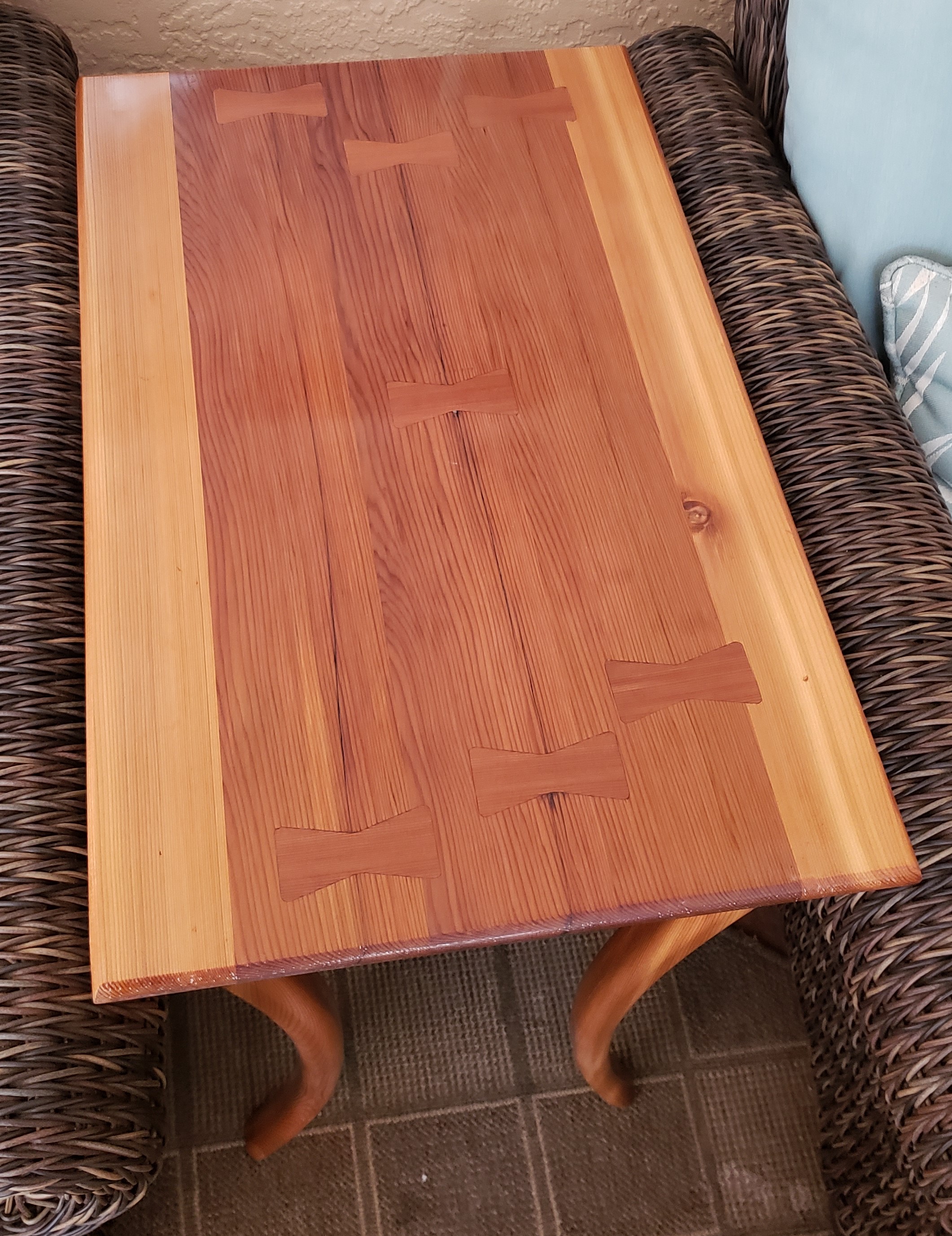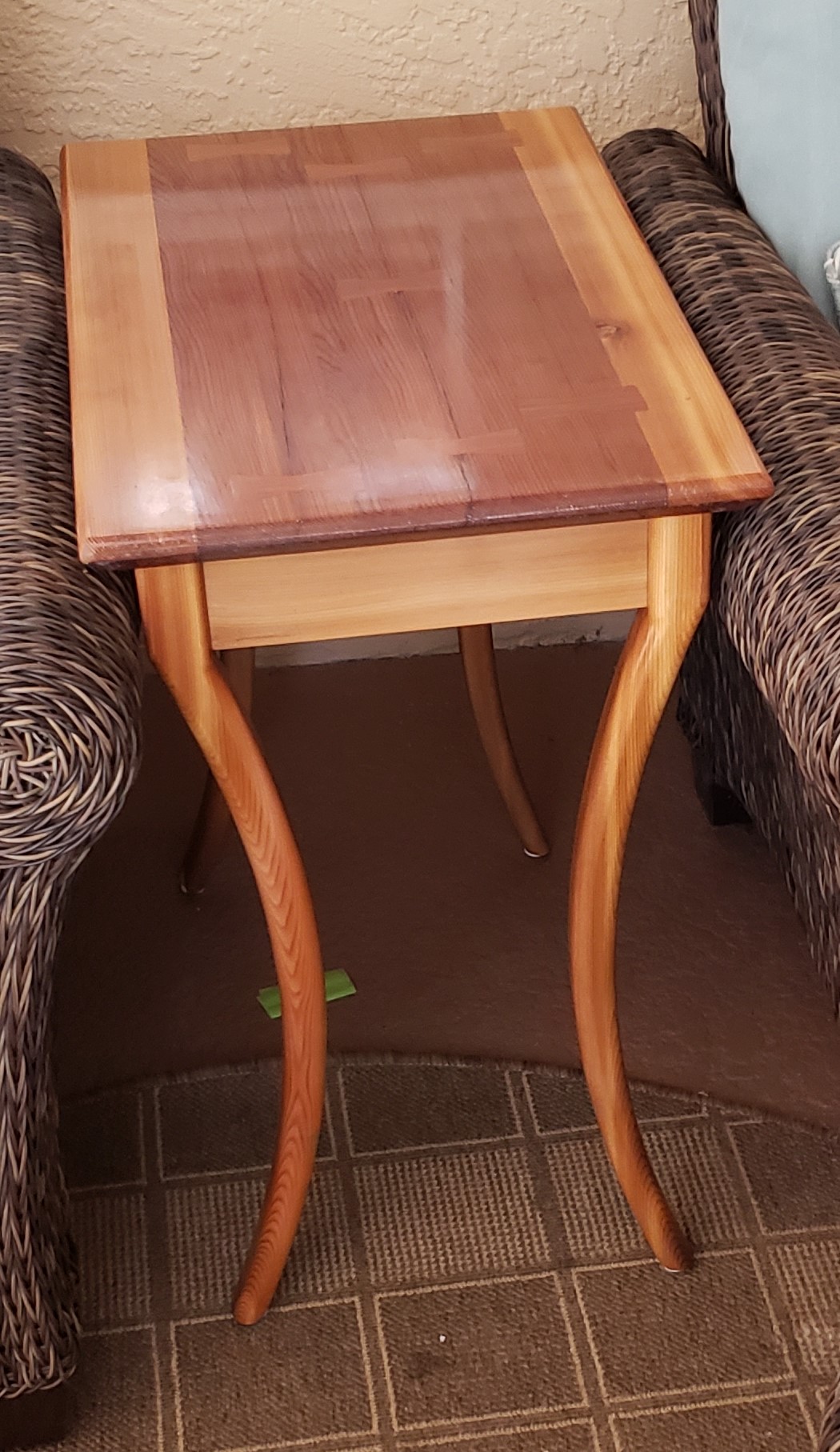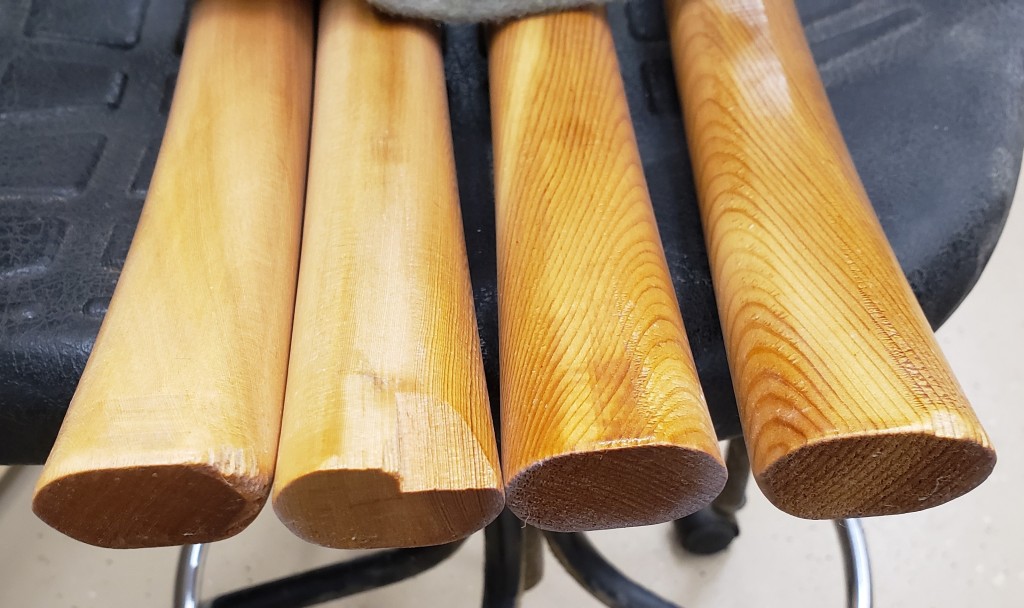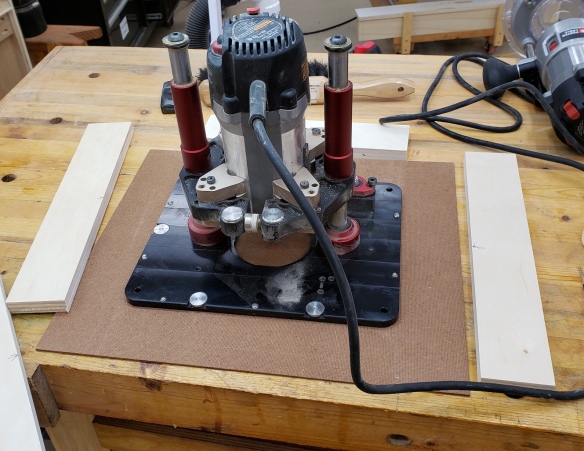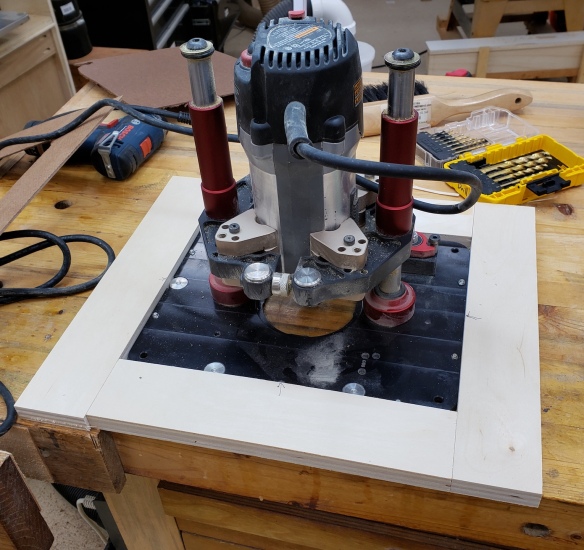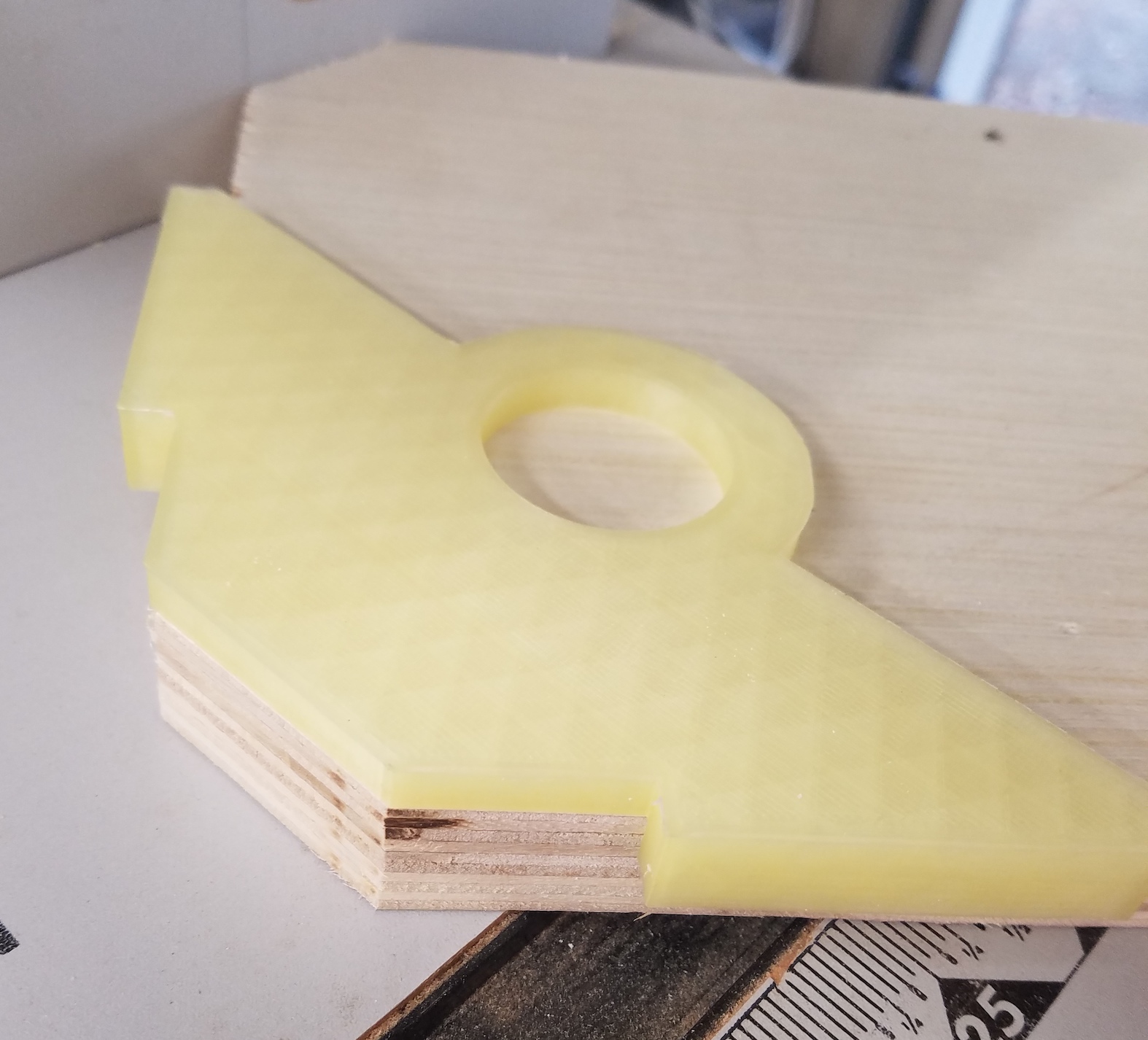When we first moved in to our house we bought some fancy wicker chairs for the back porch. They are lovely, but we weren’t wild about their side table options. “I’ll just build something!” I said. 3 years later we were still using a junky wooden folding table the previous owners had left. To be fair, it was at the right height, but was rather small.
I kept having this idea of using cedar 2x4s to make the legs, and cutting a bow in the legs to make them match the chairs. I used some junky pine to cut two rough legs and mock up an inward and outward bow. The inward concave version kind of matches how the chairs are shaped and is how I will proceed.
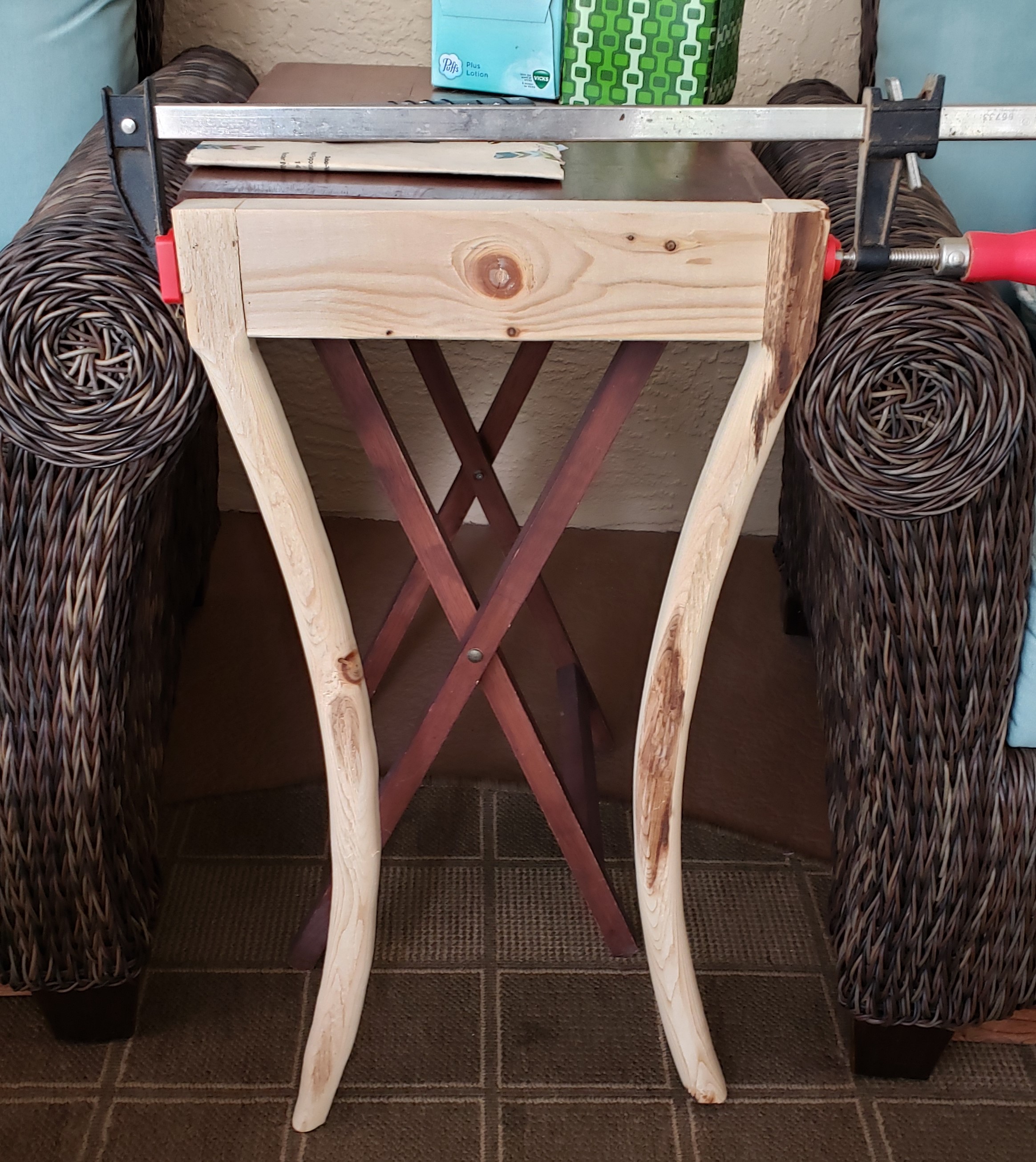
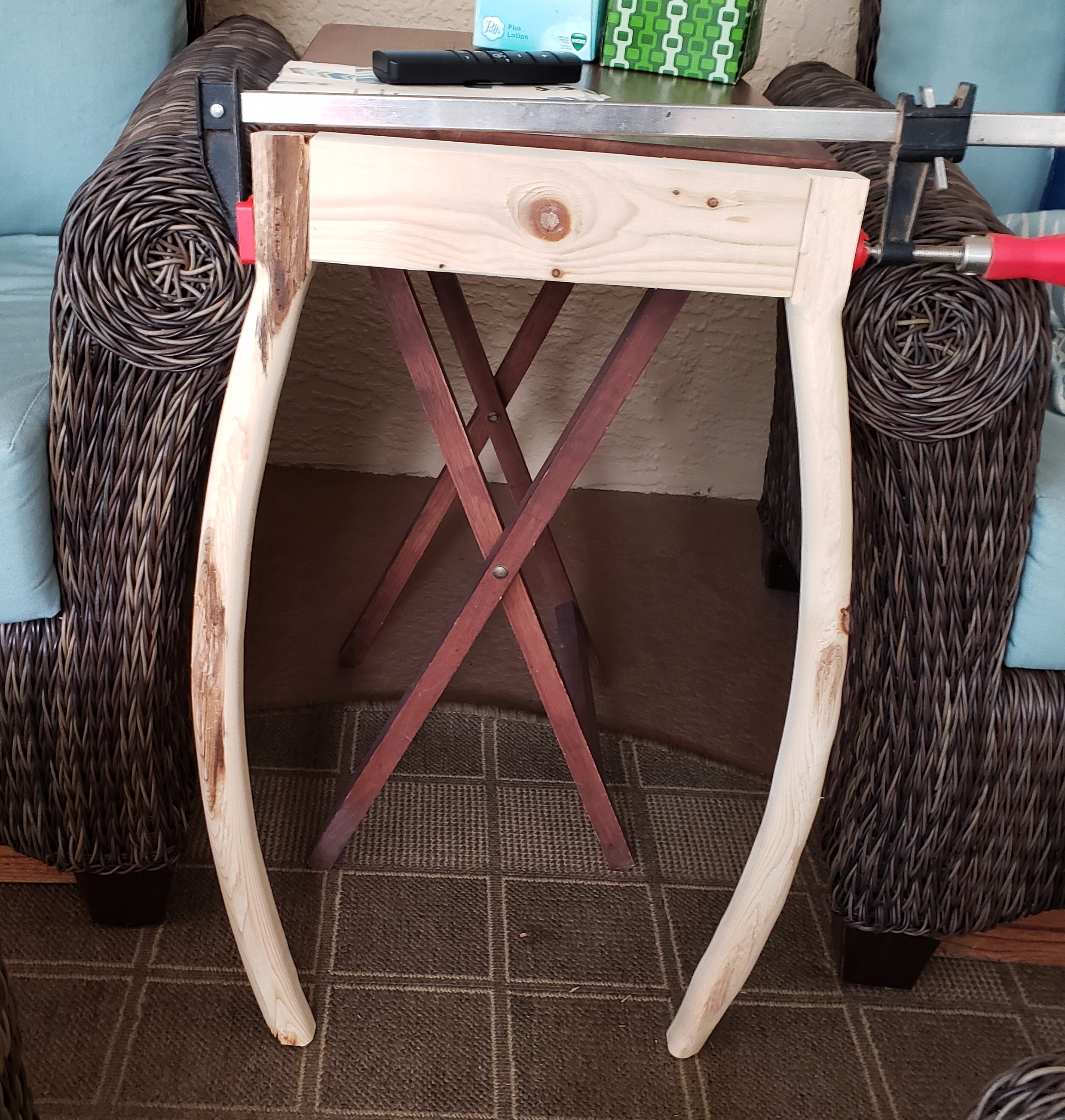
I picked cedar because it is available to my local hardware store, is reasonably priced and is supposed to be good for outdoor applications. I did not realize how soft it is and probably won’t build anything else nice with it again. It dents and tears out really easily.
Table Top
I knew the size I wanted the table top to be so I started there and will build the legs and aprons to follow. I mixed some darker and lighter wood to create a little contrast on the top. These were the straightest cleanest grained pieces I could find. They had a bit of a split that looked ok to start with, but got more apparent as I milled.
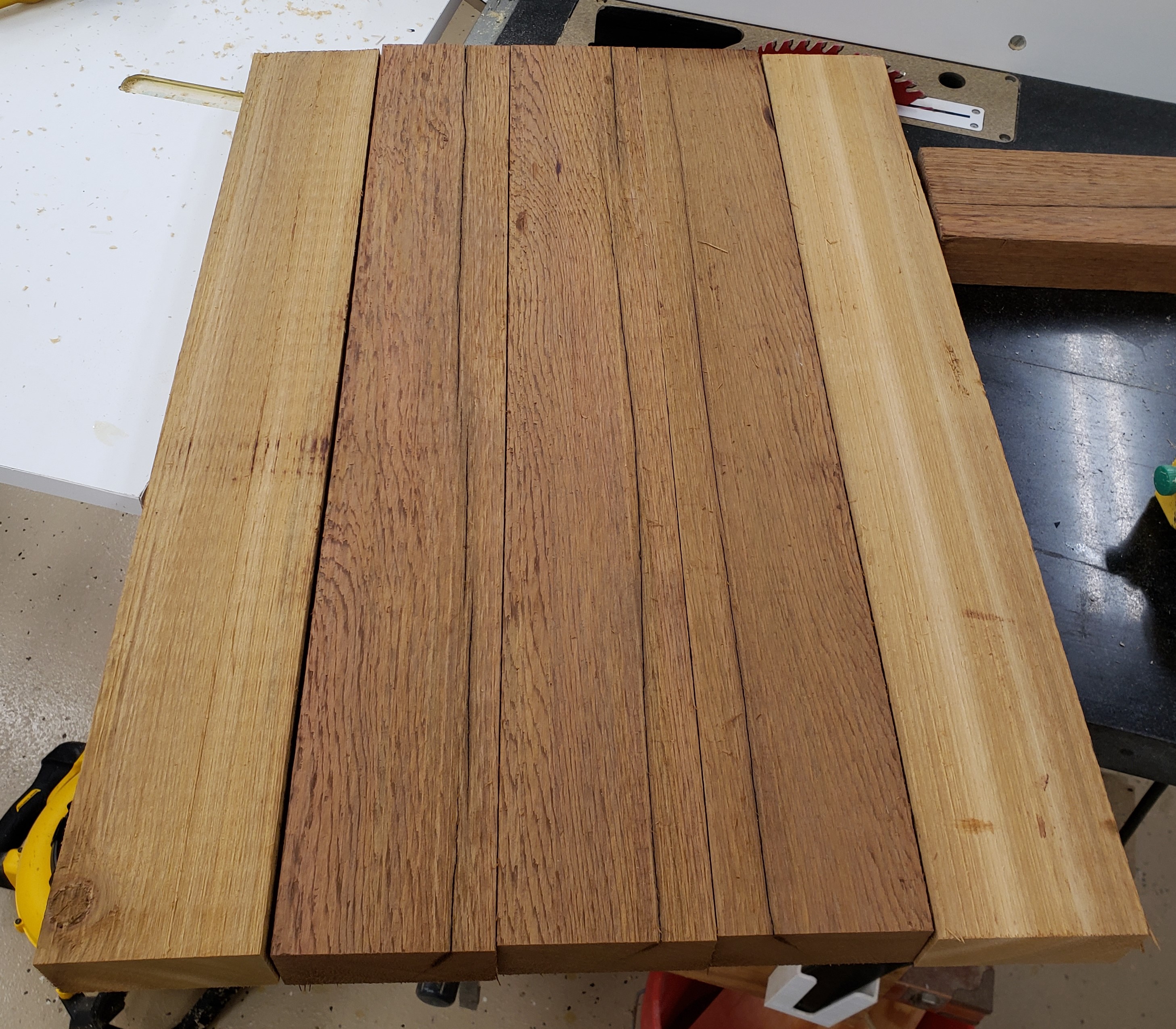
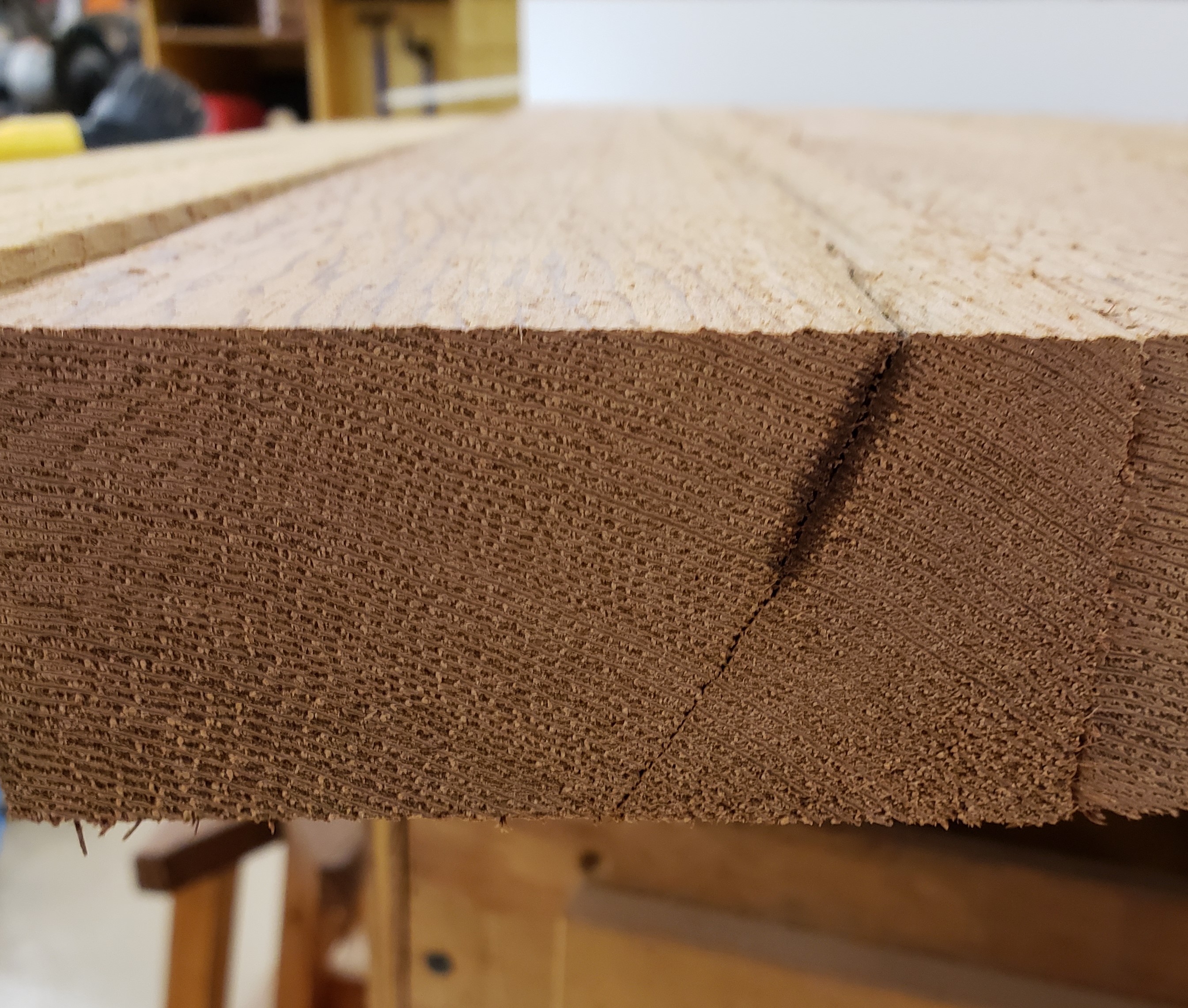
I hadn’t used my hand tools in a while but used this chance to flatten all the boards and check grain orientation. After glue up I picked up the top and figured out how bad those splits were. The whole top would flex around those splits like a taco. These will have to get fixed.
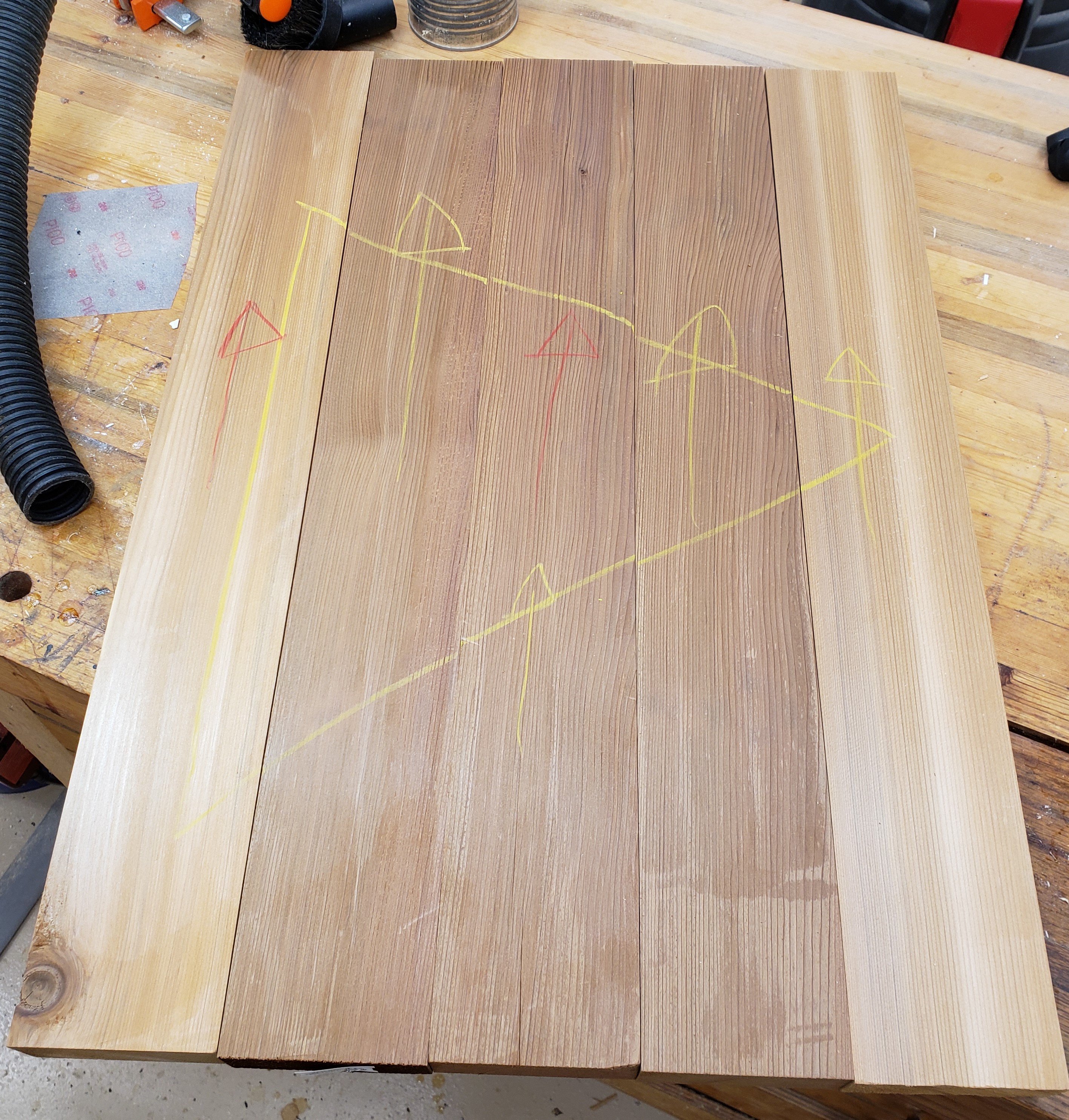
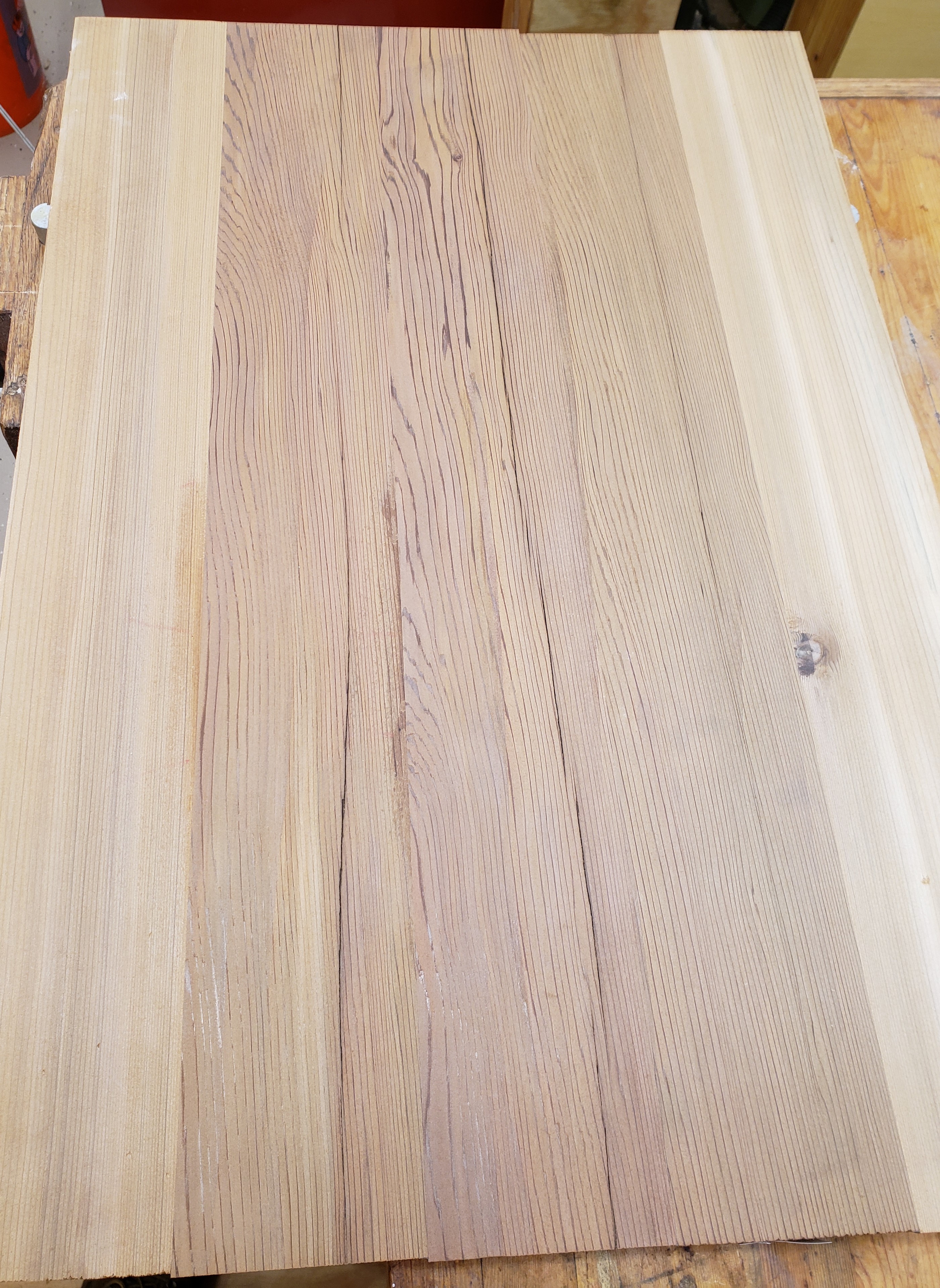
My quick little side table is becoming less quick. I have never done butterfly keys, but why not start now?! It took a few iterations but I made a key shape that my pattern bit would replicate and matched the corner radius a 1/4″ router bit would produce.
First you use double sticky tape to place the template. Plunge route the socket that will accept a key. Tape a template to the top of a key blank and pattern route the key. I made them tall enough to resaw and get two keys per pattern. I cleaned up the socket area, glued in the key and then planed the area flush.
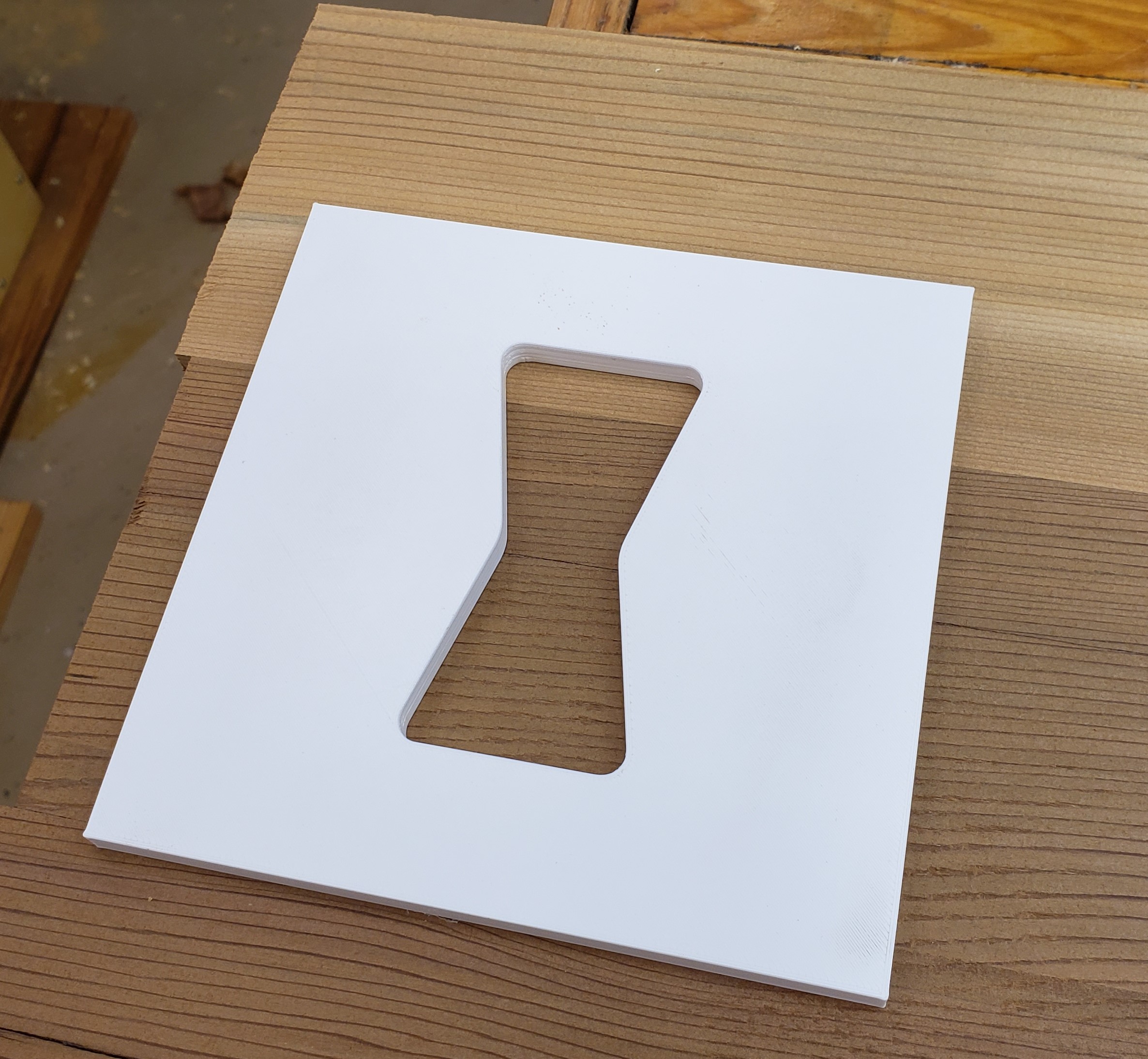
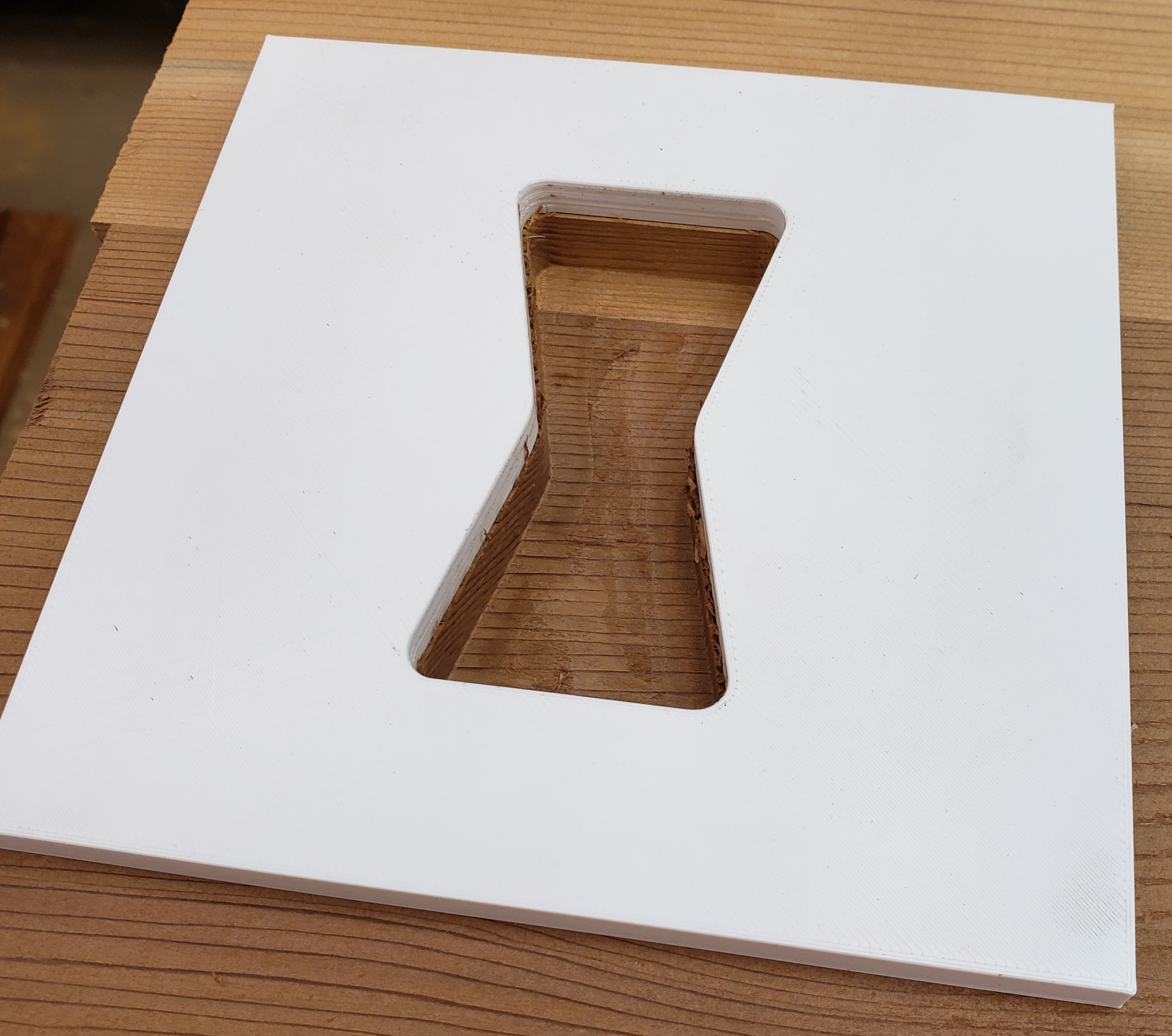
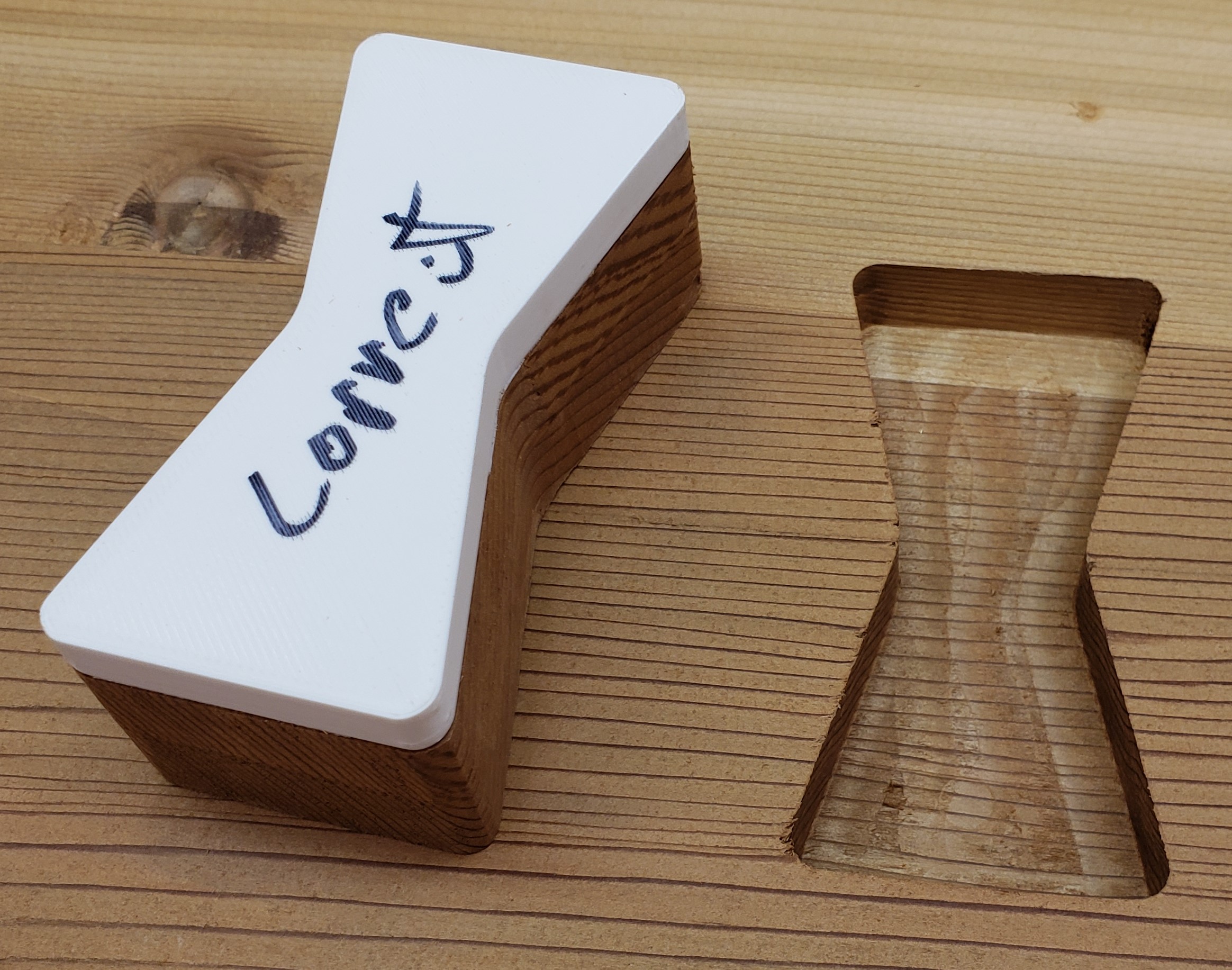
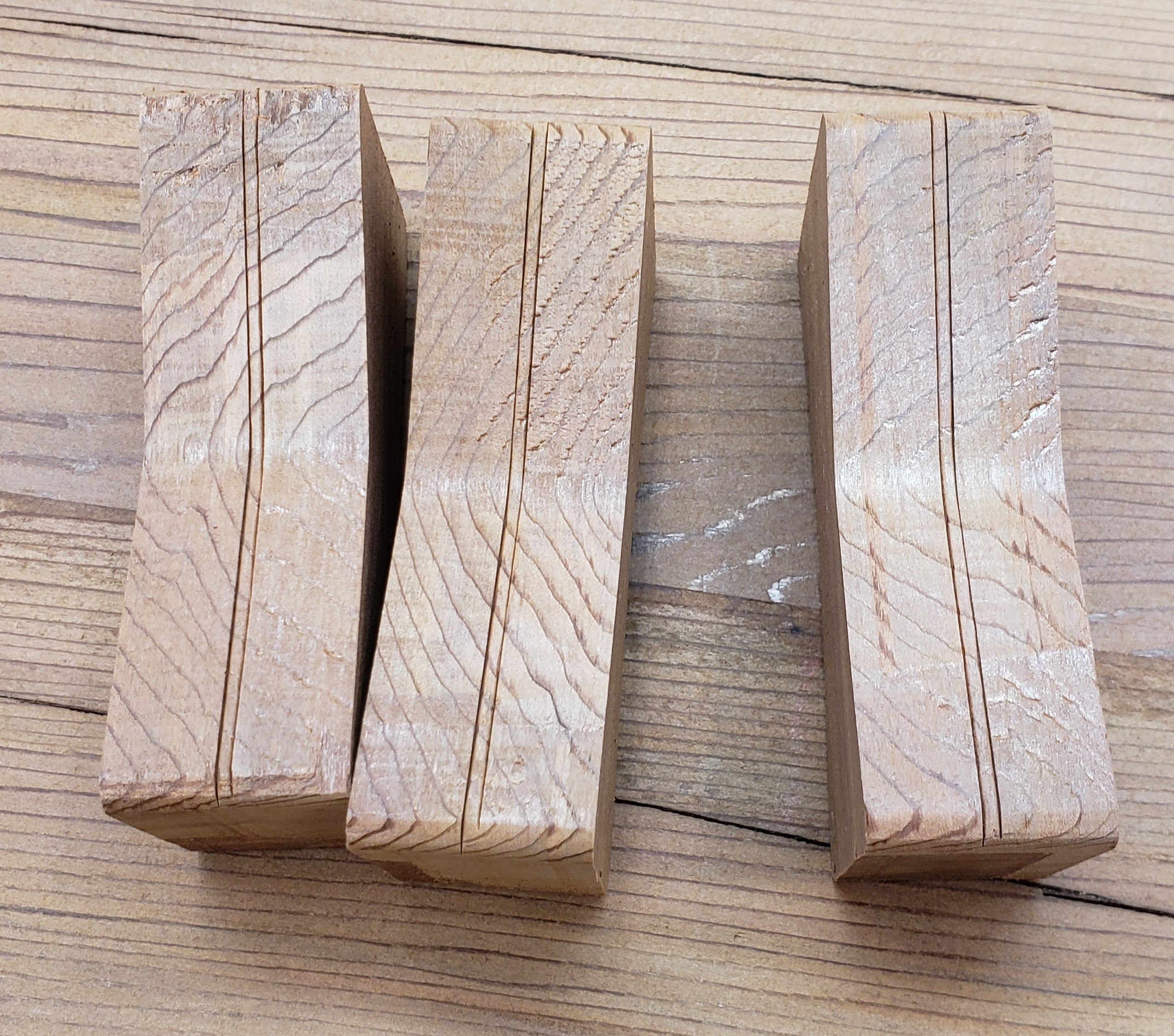

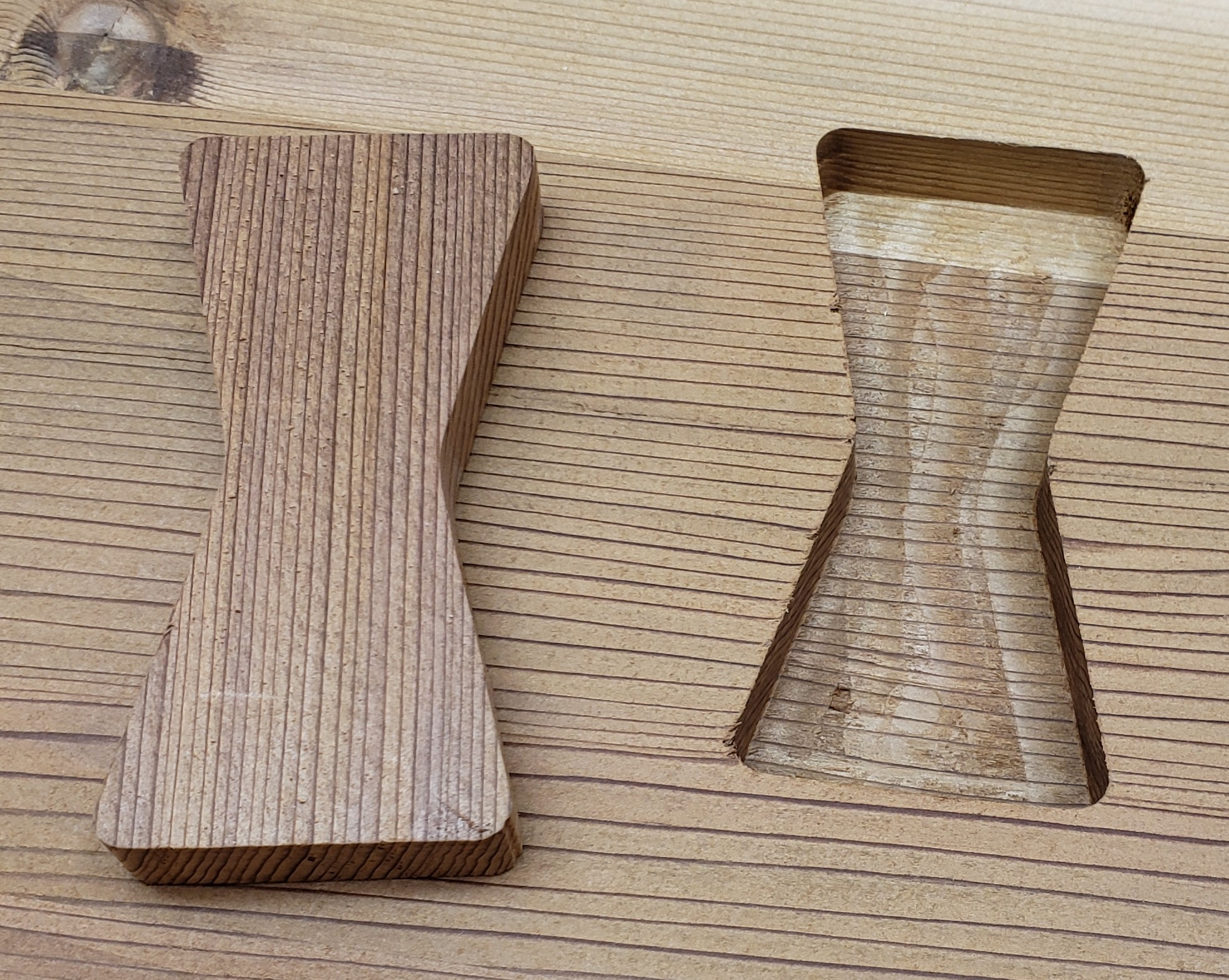
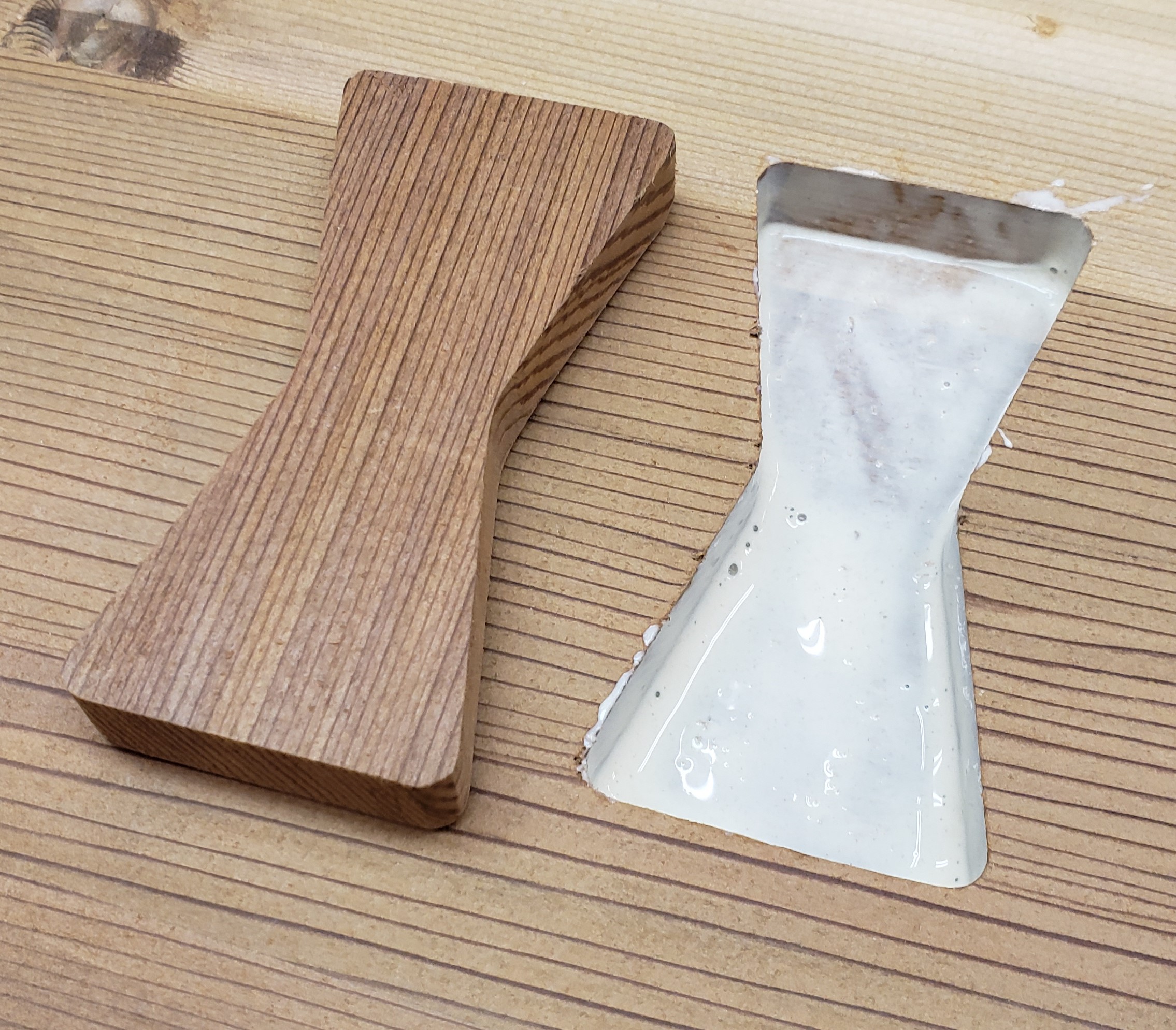
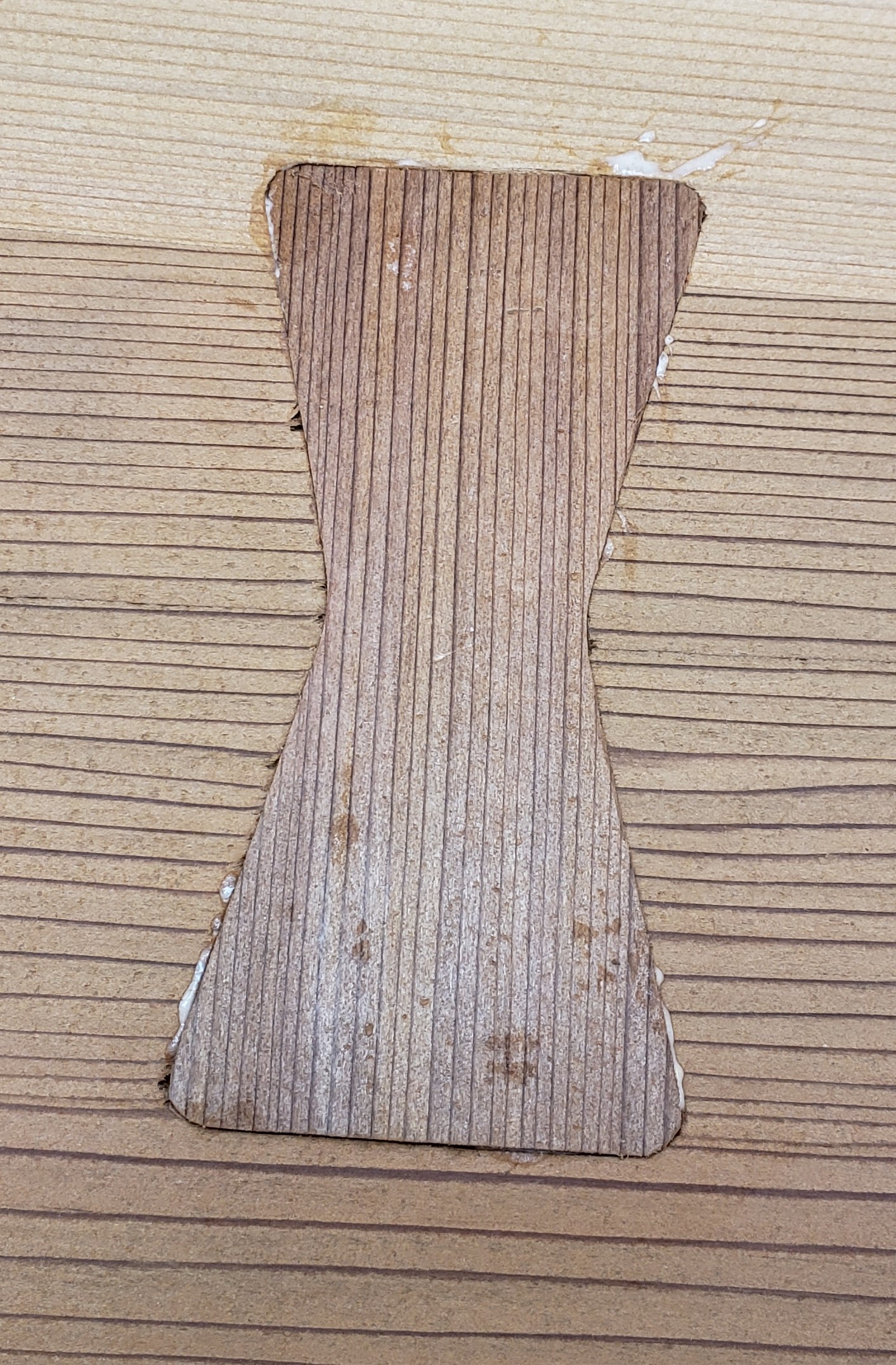
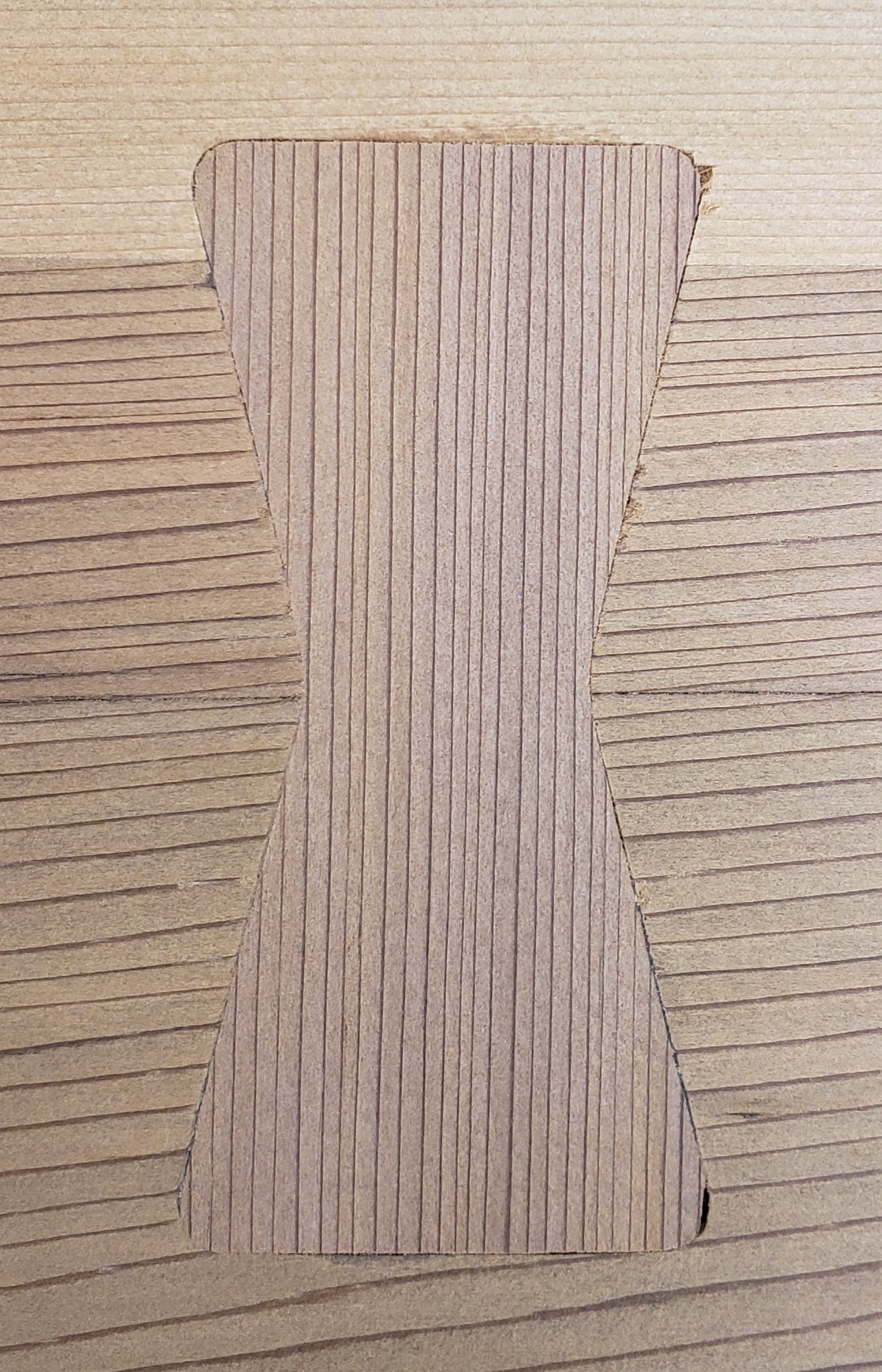
The other side of the top looks much cleaner and was originally what I was going to show. After the keys turned out so well I showed it to my wife and she thought it looked better that way. Not sure if it qualifies as Wabi-Sabi or not, but it feels like it to me. With all the keys installed the table top feels really solid and doesn’t flex anymore. I trimmed up the edges and put a roundover and chamfer all the way around.
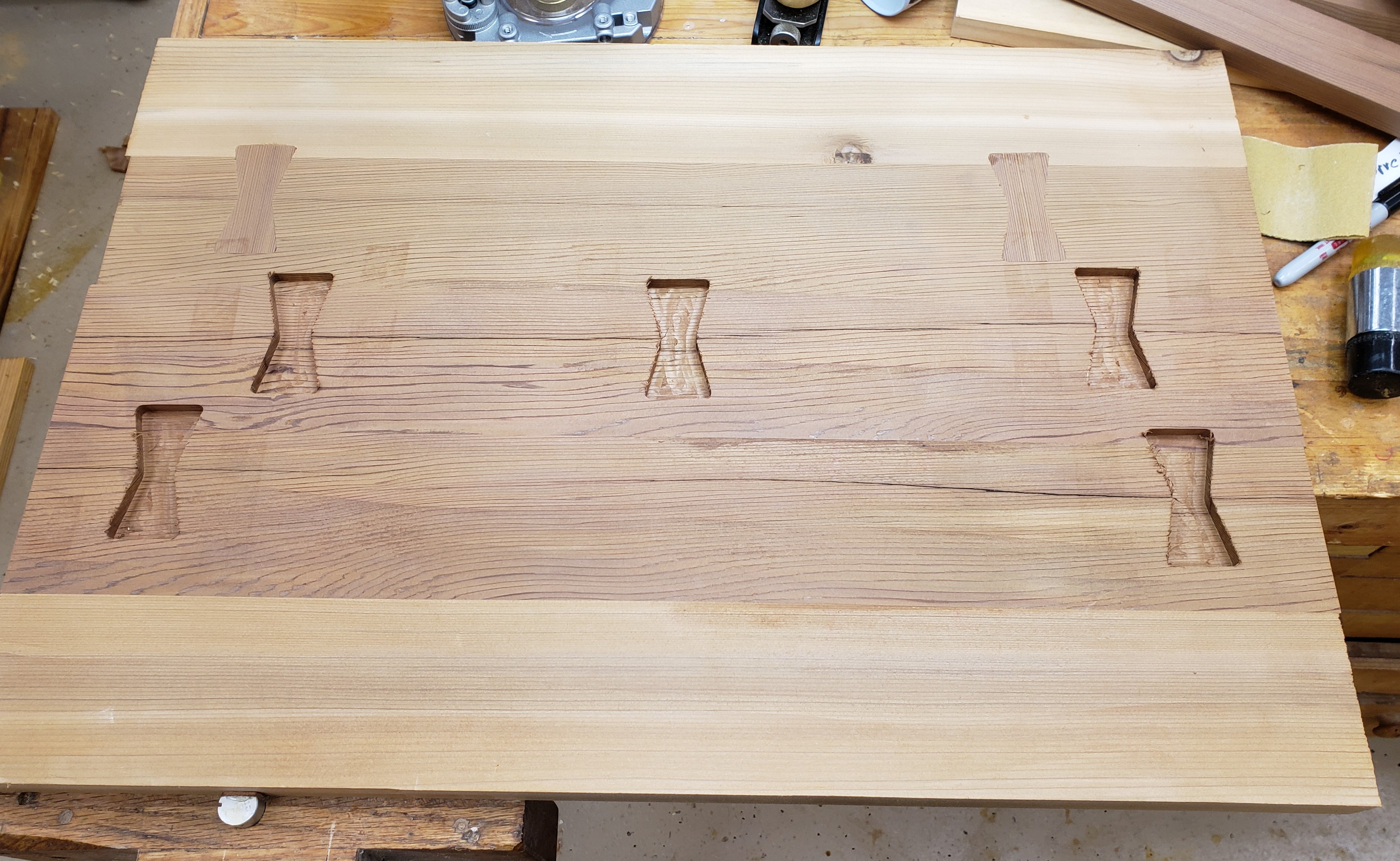
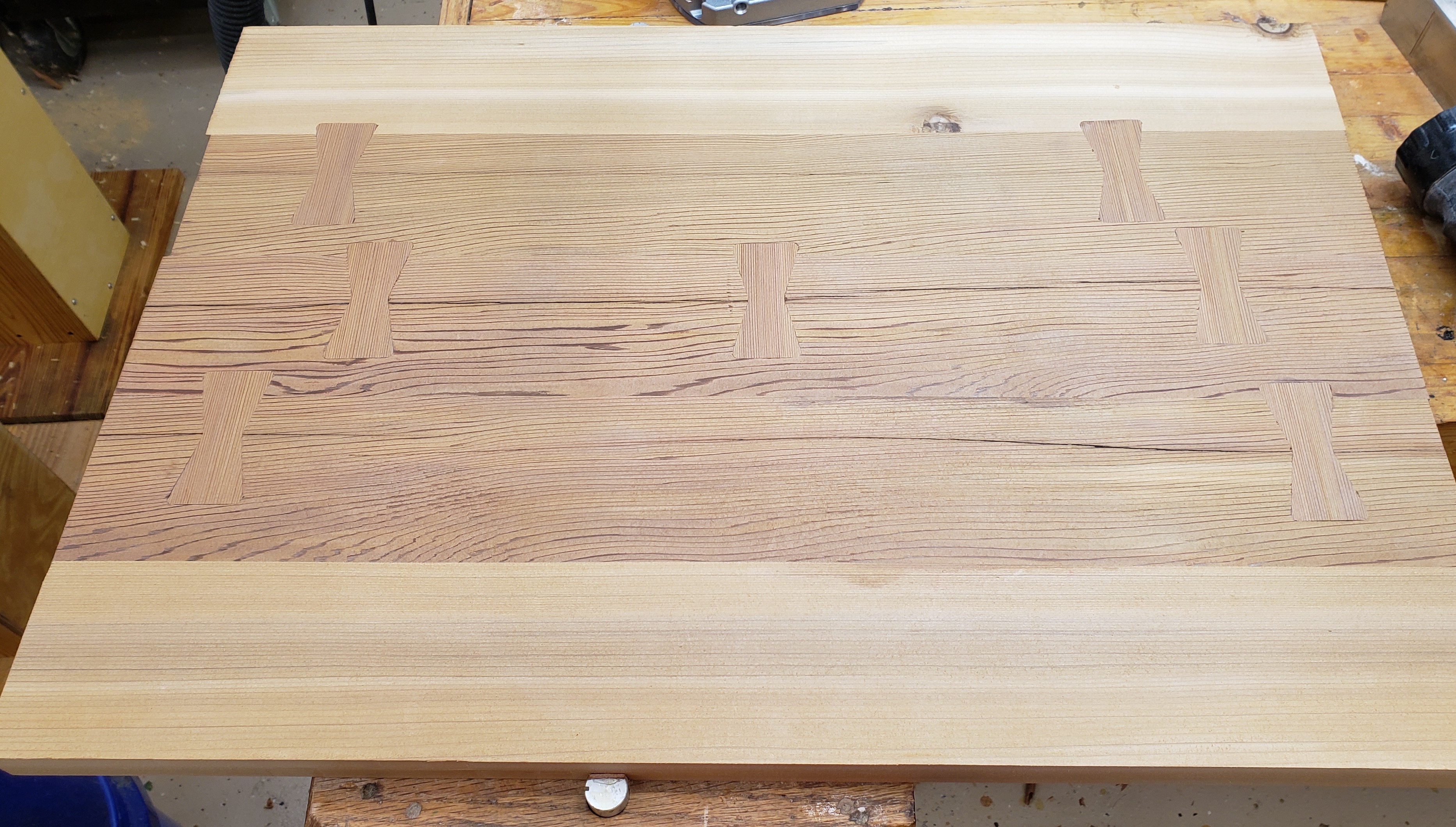
Legs
Moving on to the legs I repeated the steps used to create the initial 2×4 concept pieces only I used a pattern to speed things up. I started by roughing out each leg on the bandsaw getting as close to the line as I dared without going over. Price Is Right rules apply here.

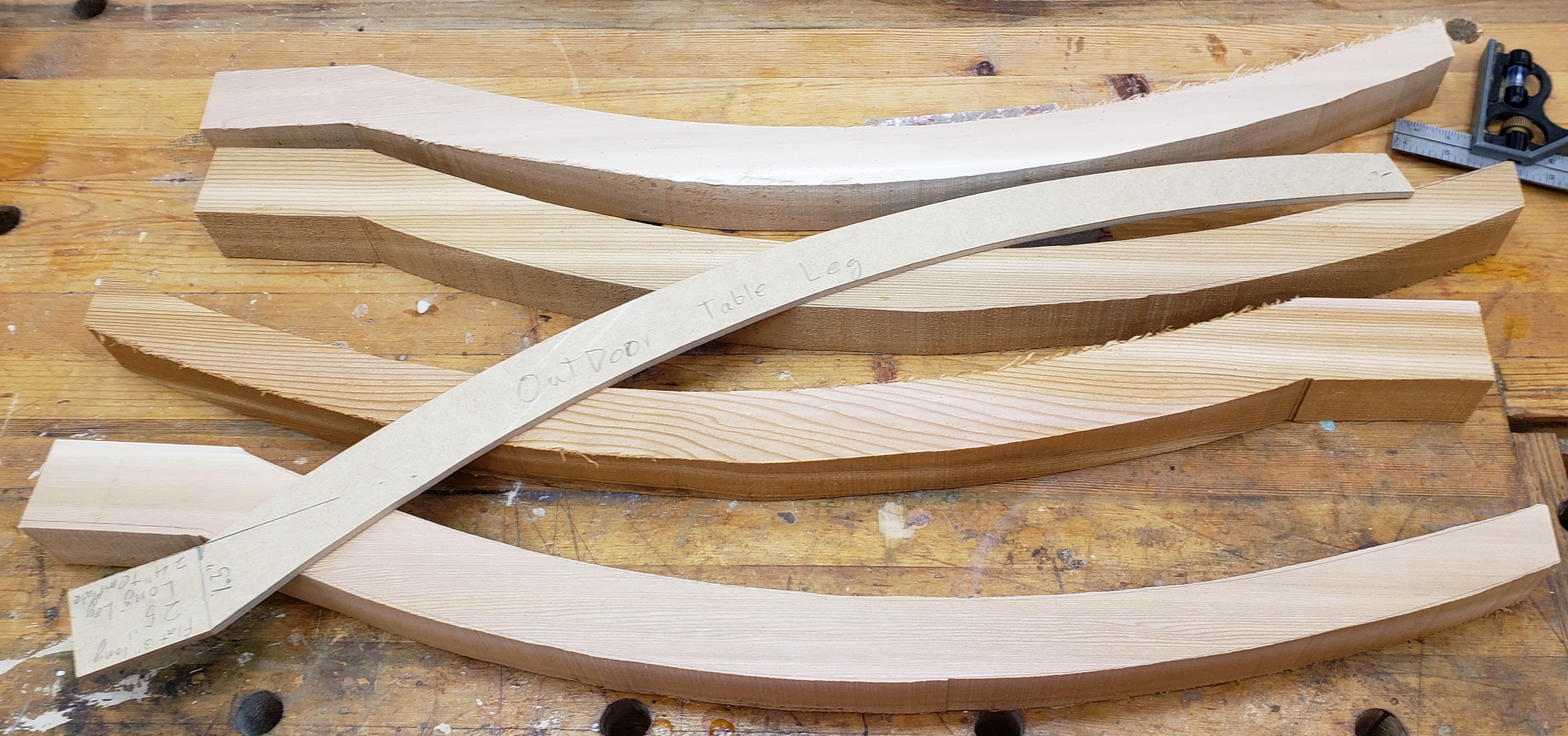
With the legs roughed I again used the pattern bit to clean them up to the line. I just bought this fancy compression pattern bit because of how much I do pattern routing. Oops, the piece is too tall to cut it all in one go. Off goes the top bearing, I will have to take one bite, then increase the bit height to do it again.
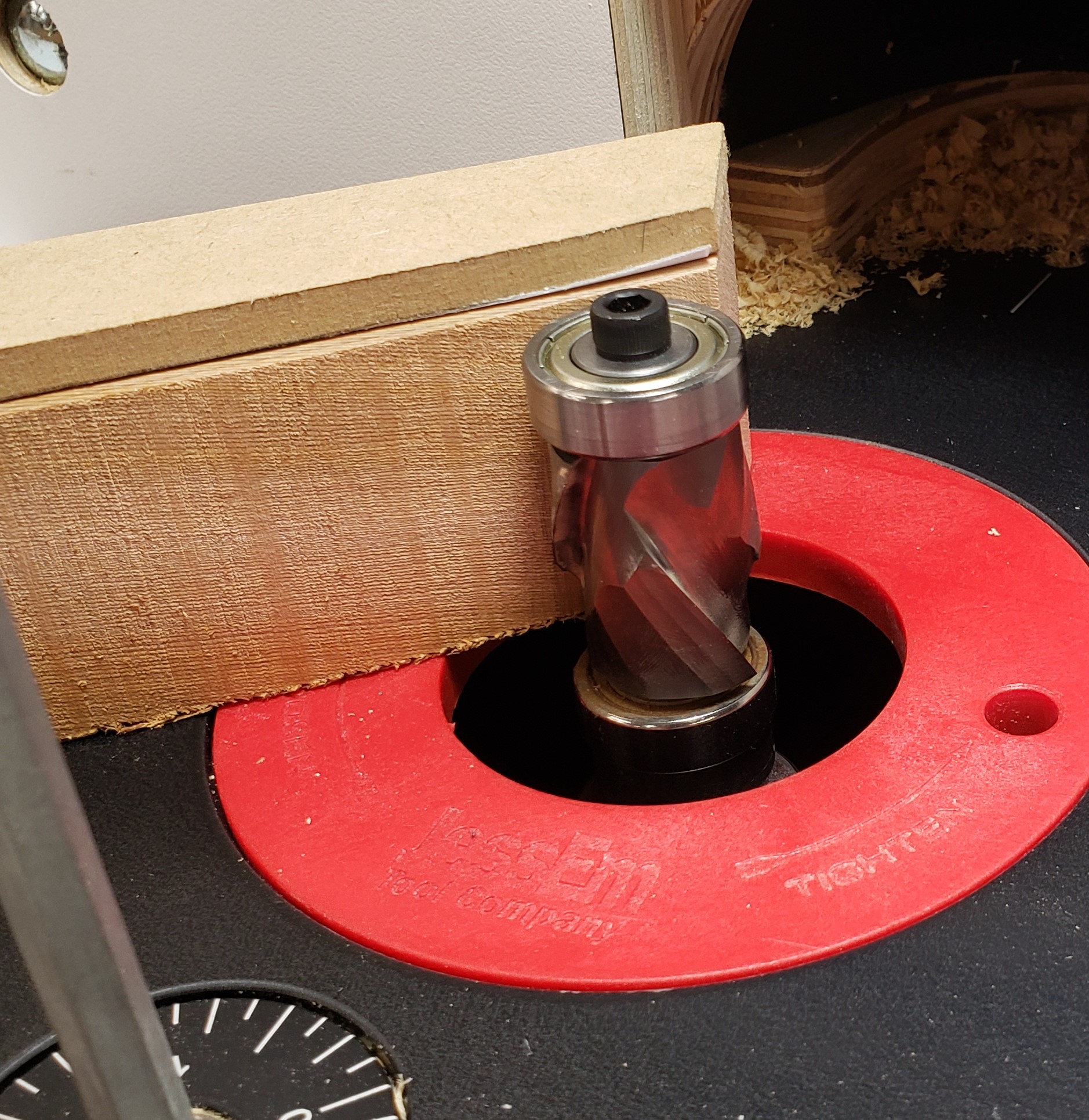
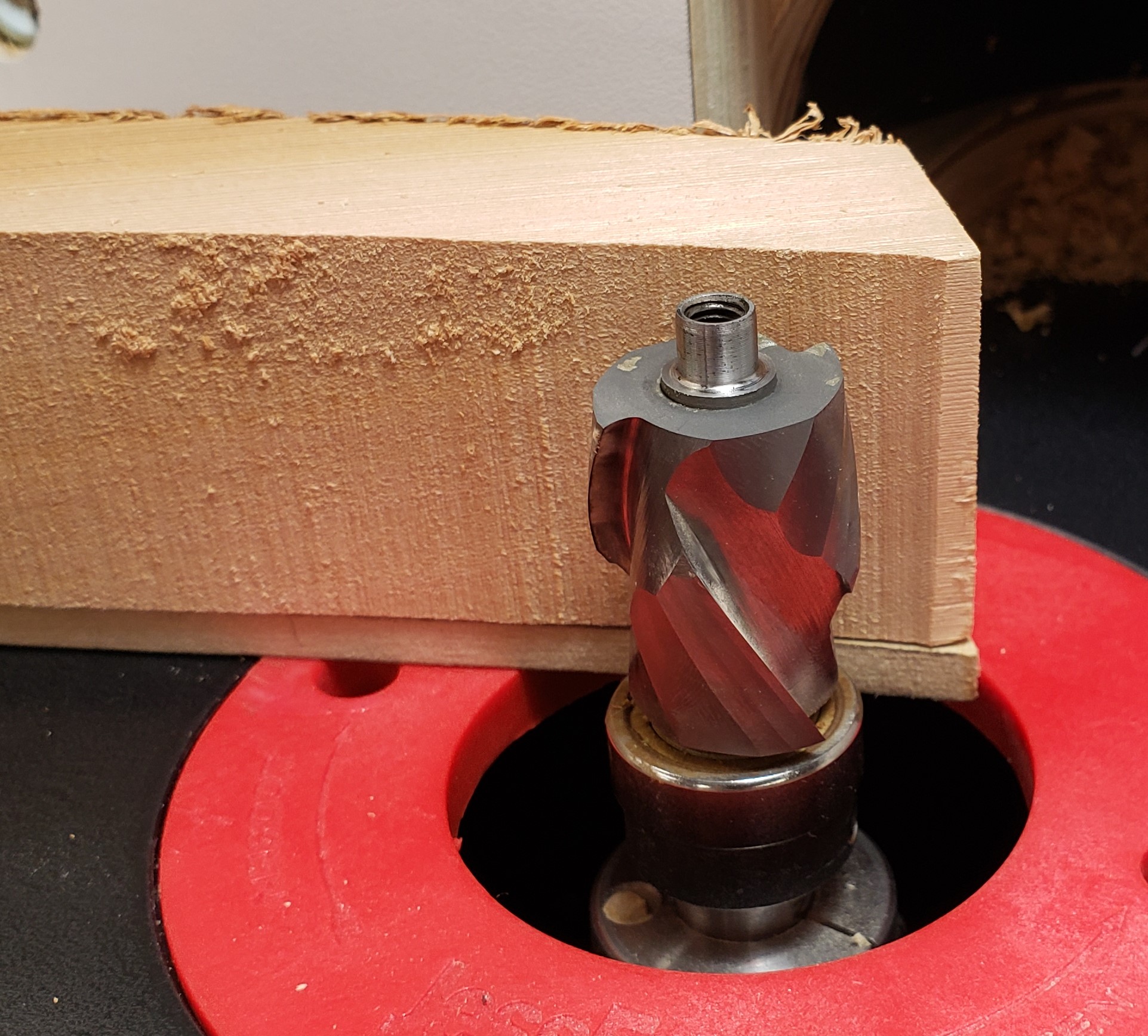

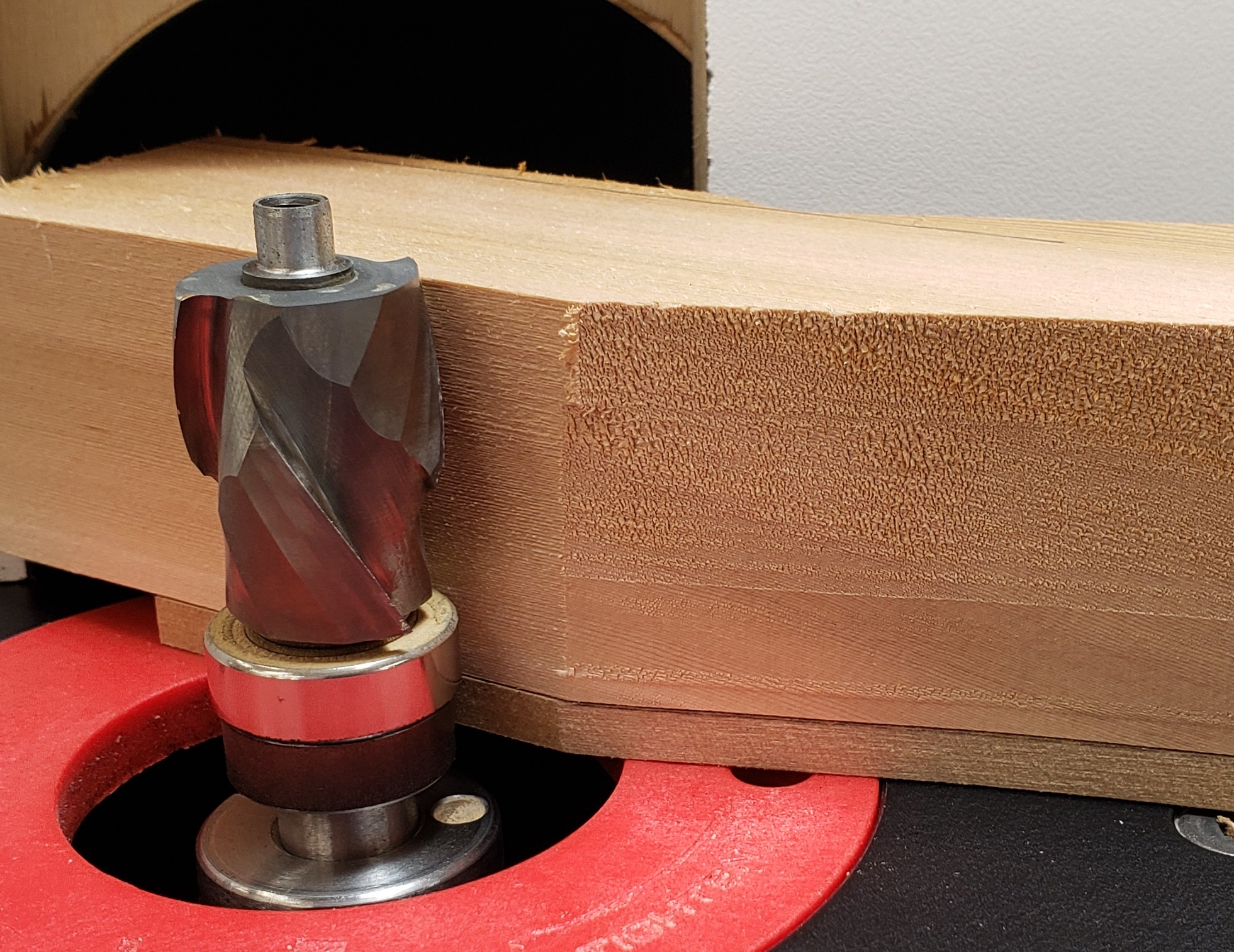
I got all the routing done, but was still left with a pretty rough surface. Cedar is so soft it tears more than it cuts with the router. I actually got to break out my spokeshave in order to clean up the leg faces. Probably overkill considering I am going to round over all the legs, but it was still fun and good practice.

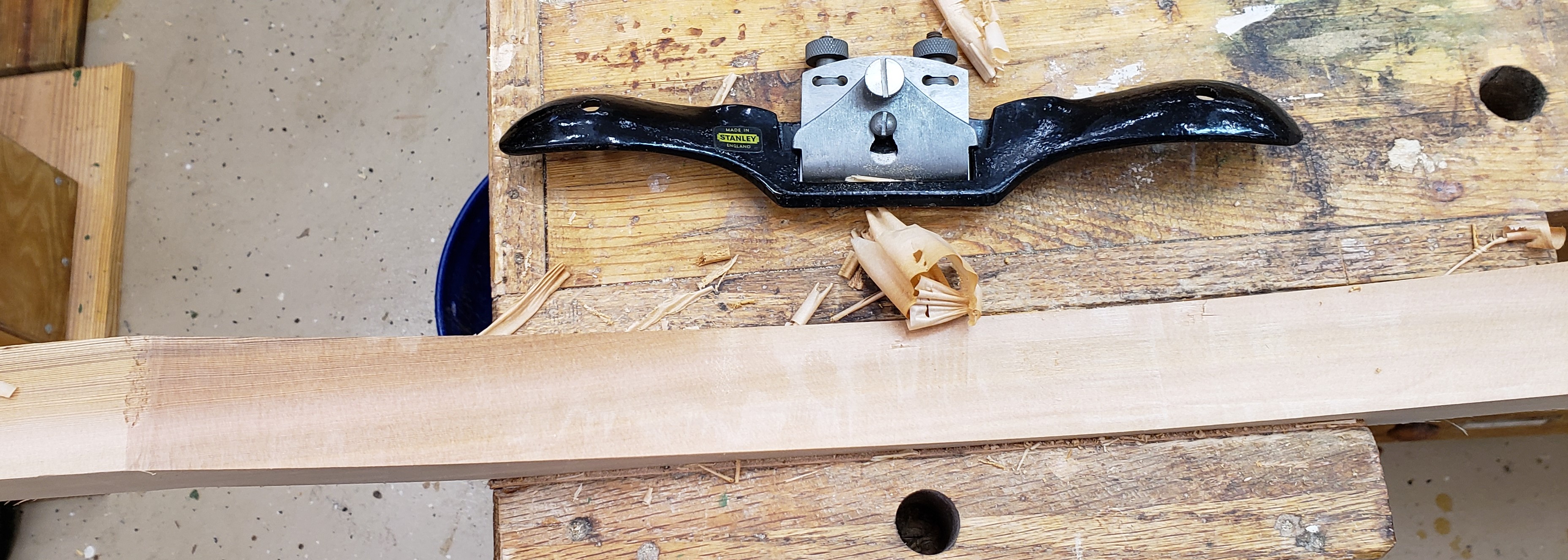
Aprons and Assembly
I am leaving the legs square until the last minute, they bruise like crazy and I want to preserve their shapes. Instead of trying to cut mortise and tenons I just used pocket hole screws. I would probably blow out a side wall trying to mortise these legs, and the pocket hole screws are outdoor rated.
To get the shape right I cut the aprons a bit long and assembled with clamps to get a feel for the size of the base. Then, I was able to cut the width and length down until the proportions looked good. Not as fancy as drawing it all out ahead of time and knowing the exact dimensions, but better than just making up round numbers and building it regardless of looks. I am no master designer, but I am getting better. Once I got the dimensions right I drilled the pocket holes and did a final test assembly.
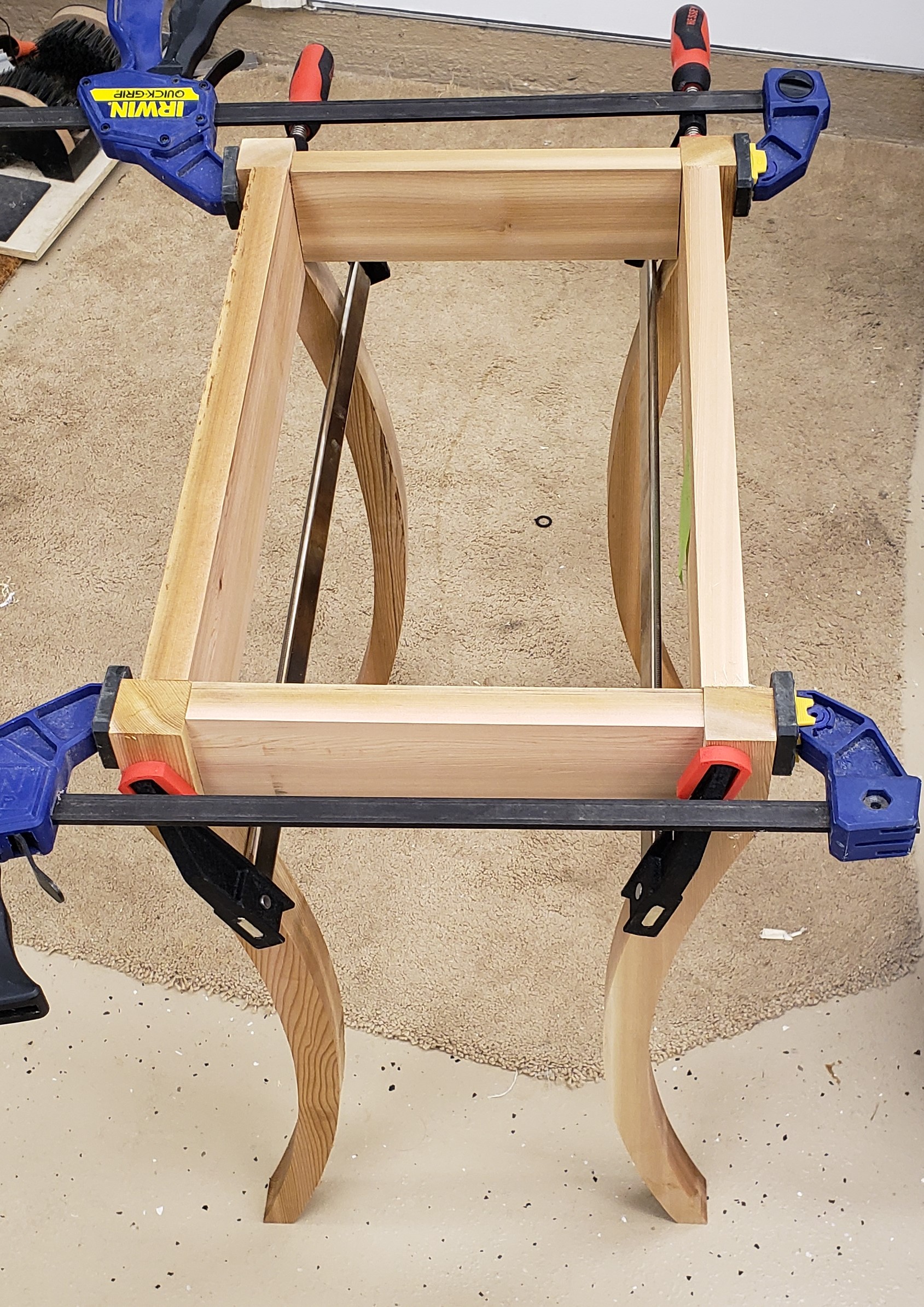
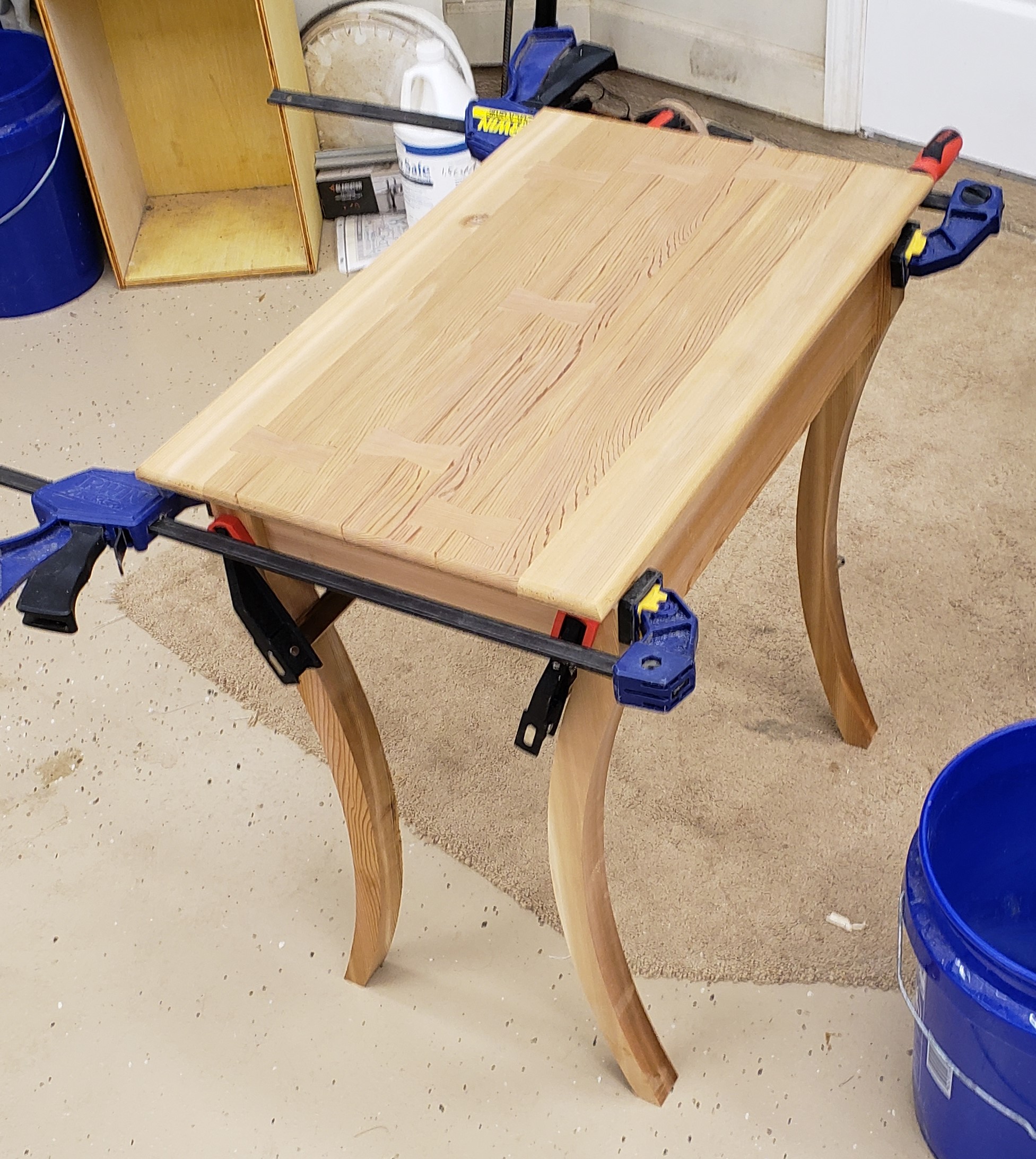
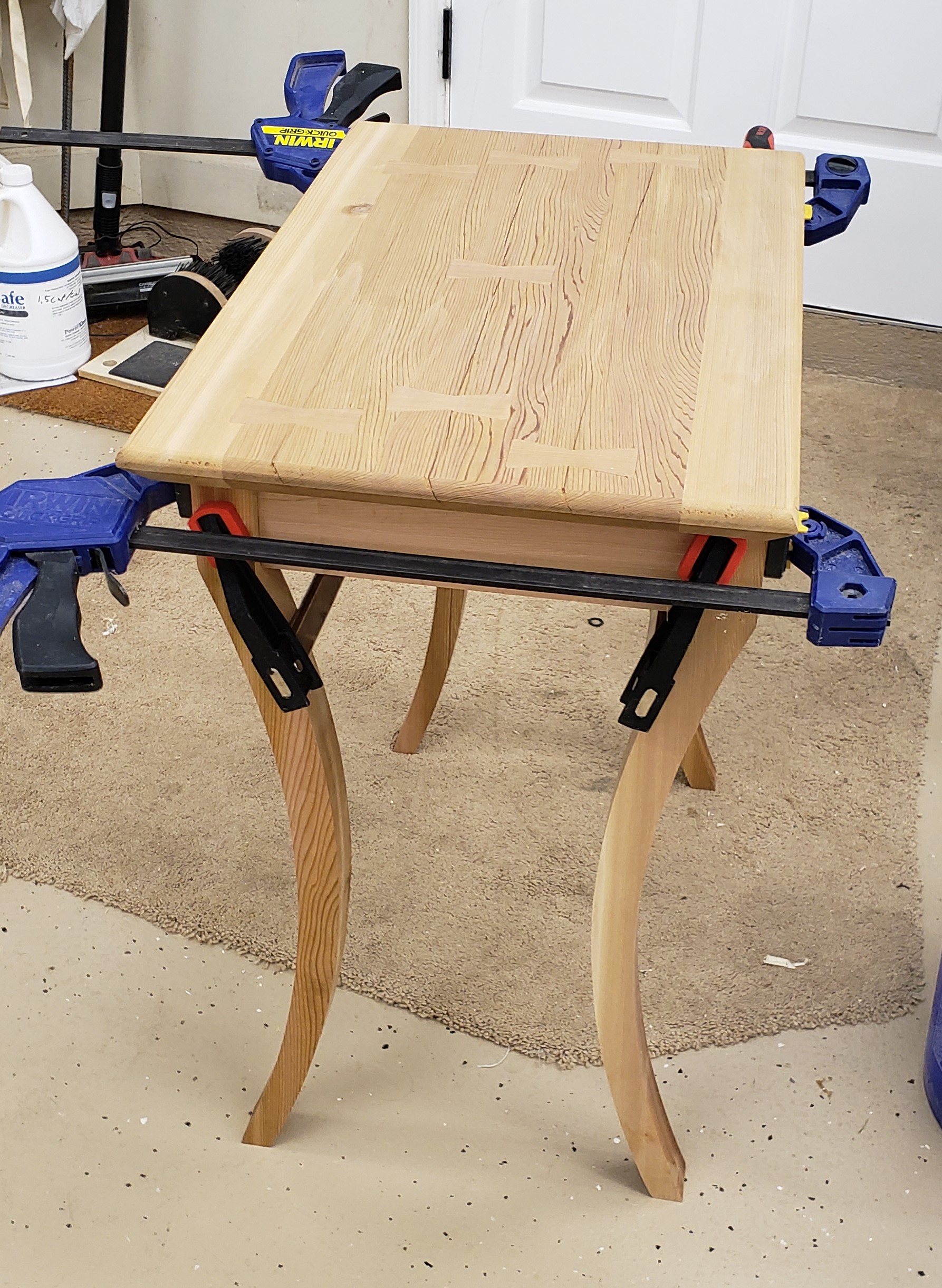
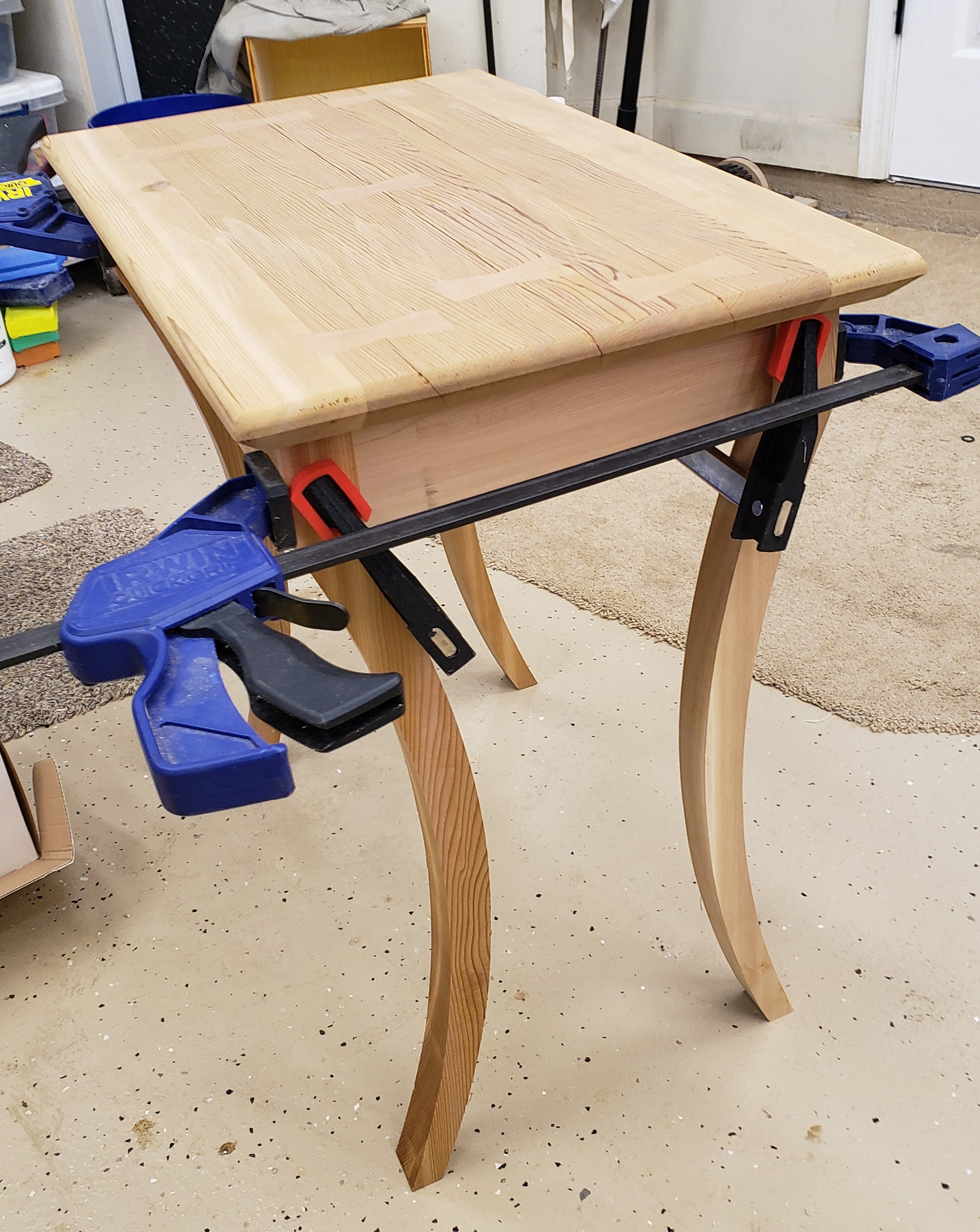

With the dimensions all set I could do my roundover on the legs and perform final sanding on everything. Once again the cedar bit me. The roundover, which I did in multiple gentle bites totally chipped out the bottoms of the legs. I could trim them down a smidge, but I figure the rabbits will chew down there anyways, so whatever.
I finished all the parts individually with a spar polyurethane that I thinned down to make a wiping poly. It is dark to help keep UV damage down and it did make the wood take on a lovely color. To attach the top to the base I made a cleat with slotted holes so the table could move and not pull apart. I also added a hidden back shelf so we could sit things behind the table. Our son likes to pull out the tissue box and assault the fan remote. These can be stored in the back.
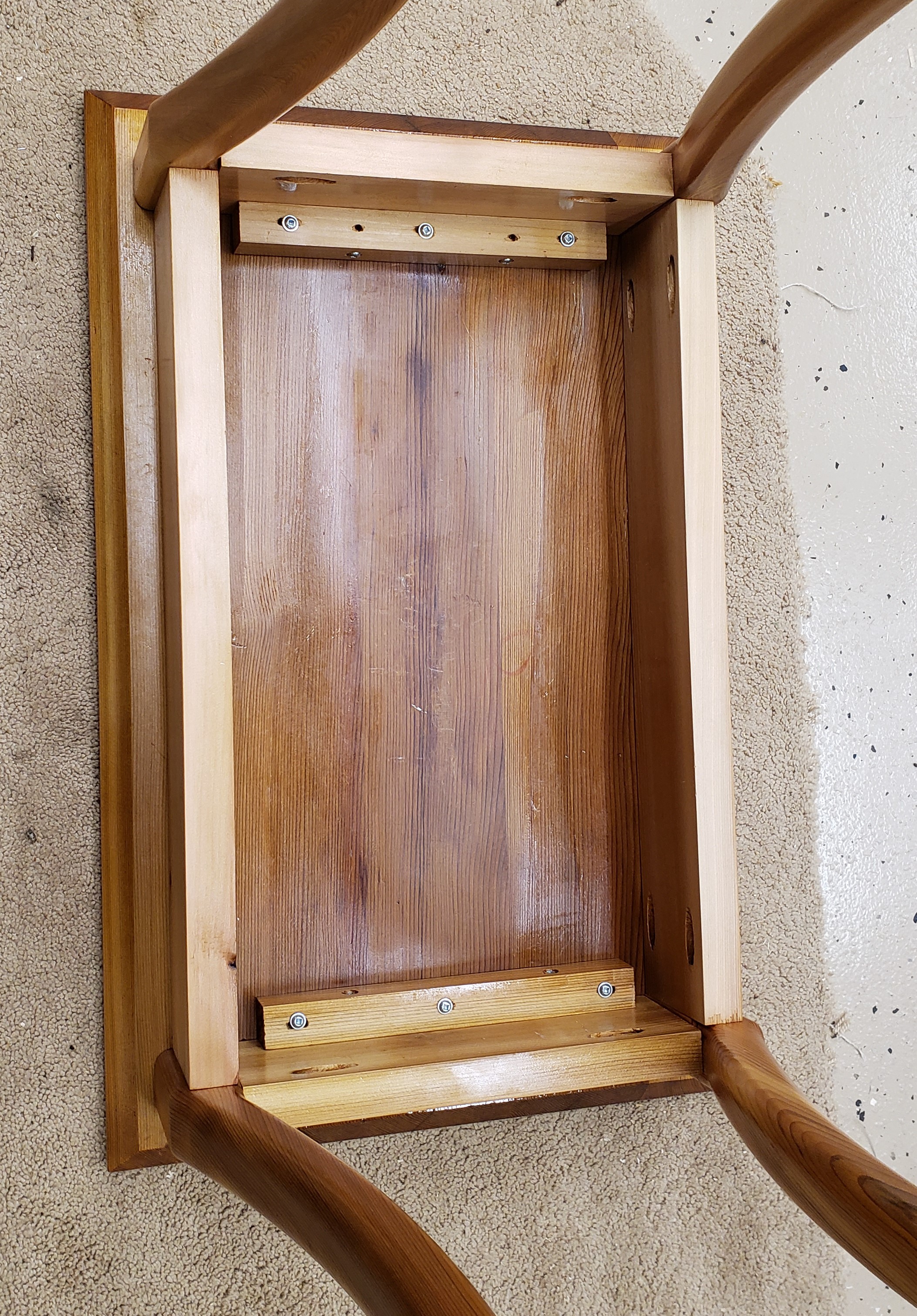

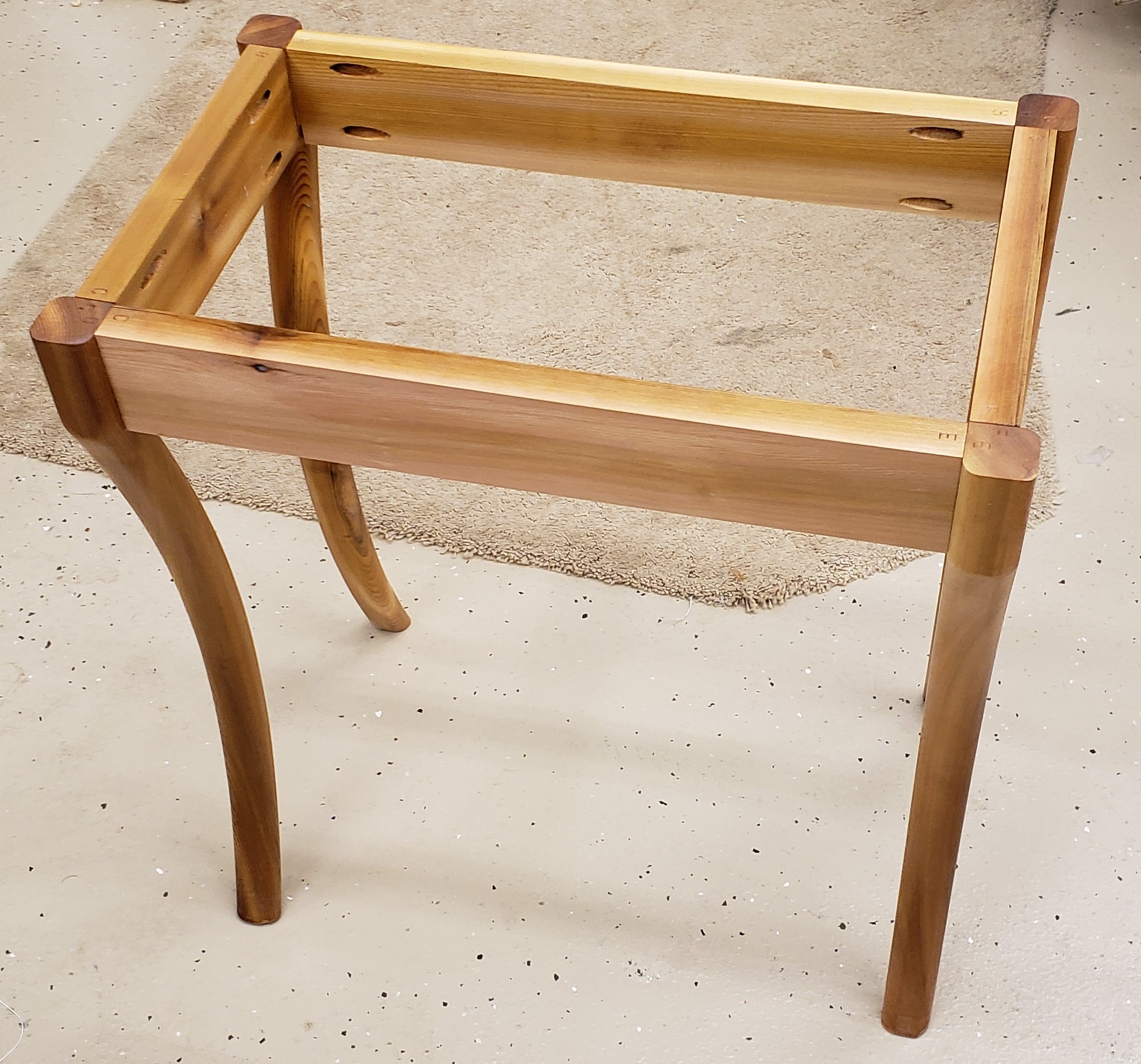
I attached some plastic slider feet to keep it from having direct contact with the ground. The table never sees direct sun or rain, and between the wood choice and finish it ought to last forever. The softness of the wood means that a child and two rabbits will destroy it mechanically before nature ever does. Done just in time for porch season to set in.
